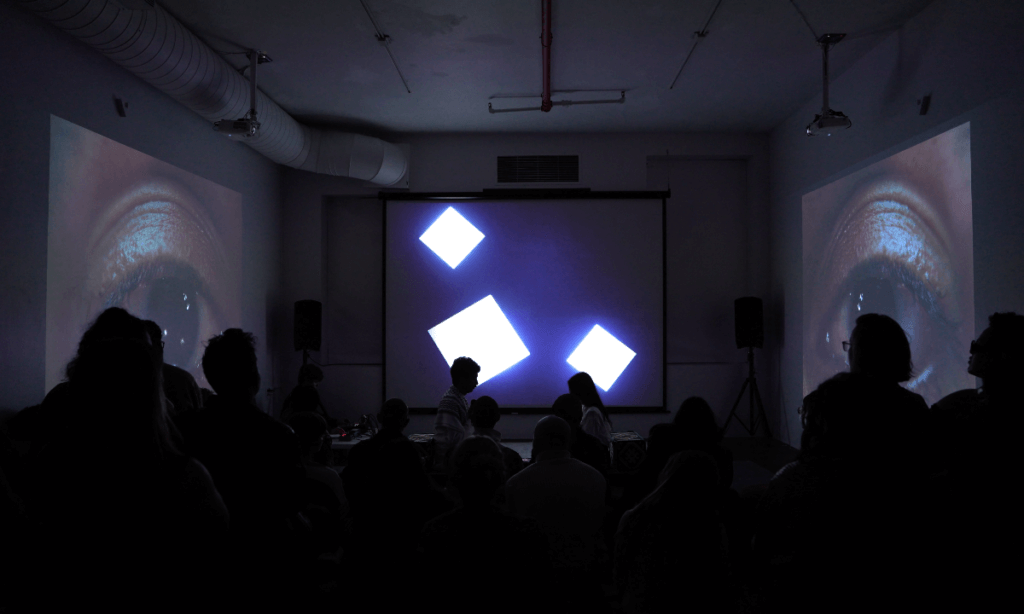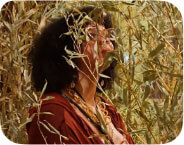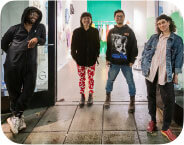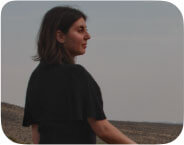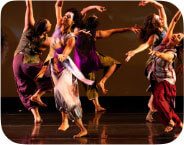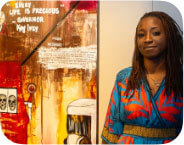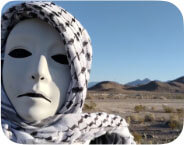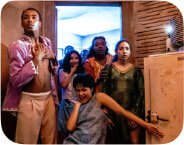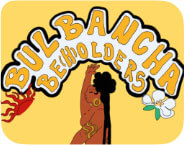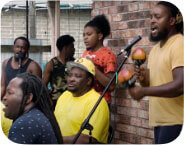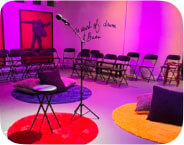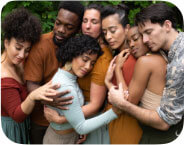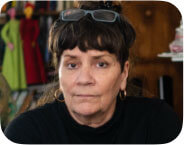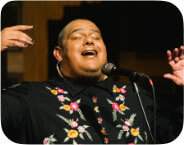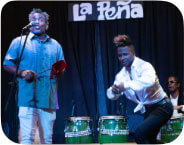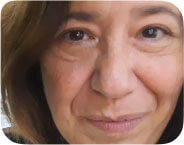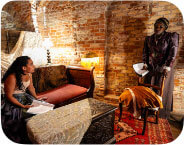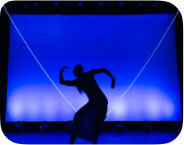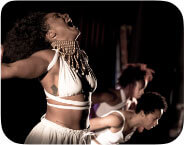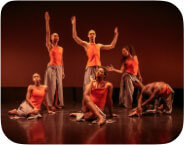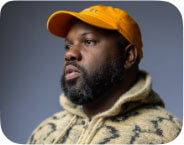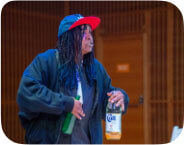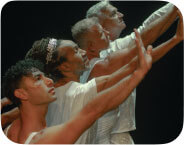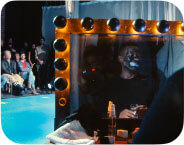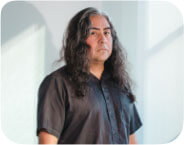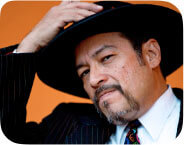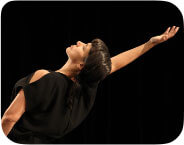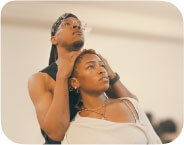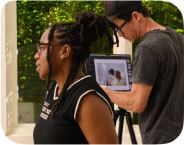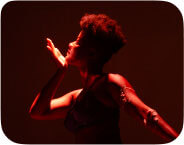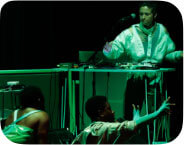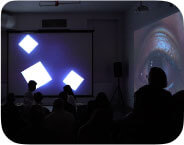Announcing the 2025 Documentation & Storytelling Fund Awardees
July 1, 2025 • 22 minute read
NPN is pleased to award $105,000 and leverage an additional $131,172 in partner matches to 35 artists and projects through the 2025 Documentation & Storytelling Fund, which supports artists to document, promote, and share their work.
Through immersive experiences, film, digital curation, community outreach, novel applications of developing technologies, and more, this year’s fund recipients are exploring innovative ways to bring their work to new communities and preserve it for future audiences. 2025’s selected projects will take place in cities across the country, with artists telling their stories in Los Angeles, Miami, Brooklyn, Chicago, Albuquerque, and NPN’s local New Orleans community.
The Documentation & Storytelling Fund includes artists who started out in our national Creation & Development Fund and our Southern Artists for Social Change program, and reflects NPN’s commitment to deepening support to artists over time, across multiple stages of a project.
“The Documentation & Storytelling Fund provided invaluable support to our project, company, and career in both artistic and financial aspects. One significant artistic impact was its role in deepening our exploration of Hawaiian cultural practices and expertise. This enabled us to present a more authentic portrayal of Hawaiian culture in our programming, elevating its quality and adding layers of depth.
“Financially, the NPN award played a pivotal role in expanding our online presence, particularly on YouTube. With the assistance of the funding, we were able to refine our social media content strategy, resulting in a significant increase in both reach and subscribers-growth of 1708.33% since receiving support from the NPN Documentation & Storytelling Fund.”
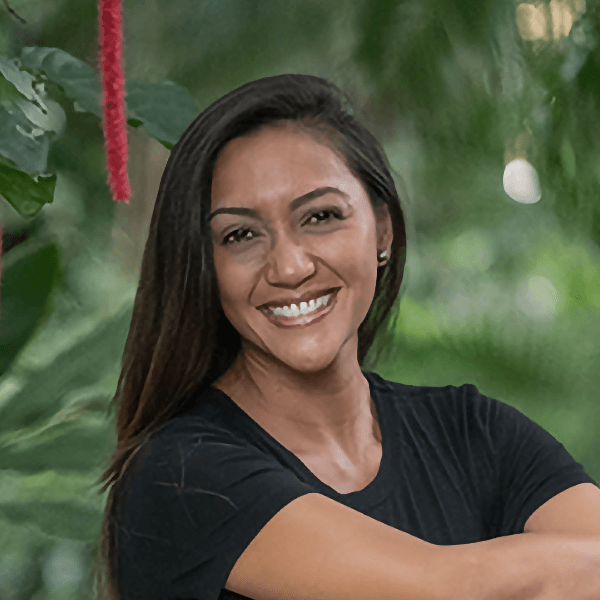
“Too often in creative processes, we as artists lack the resources and bandwidth to properly document our projects, and so they become forever lost in the past. However, with the support of the Documentation and Storytelling Fund, I had the support to imagine the way that this opera could live on and impact audiences far beyond the live performances. I am so grateful for this resource because it will enable this story to continue into the future, and I will be able to use this high quality documentation as a tool to further other projects as well.”
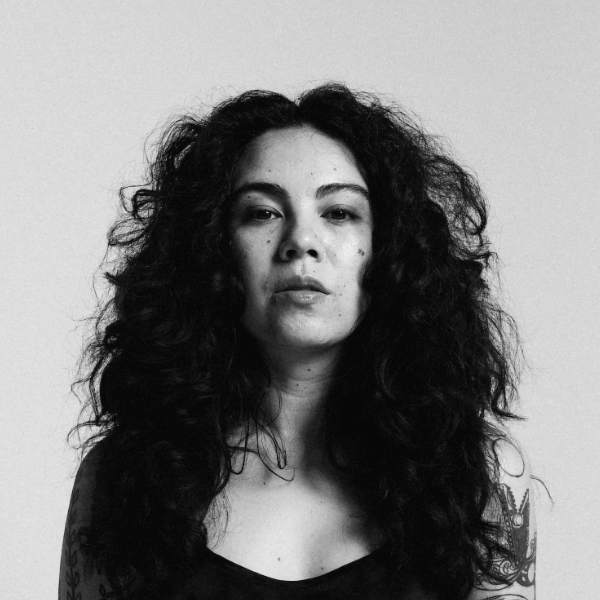
The Documentation & Storytelling Fund is made possible with support from the Doris Duke Foundation and the Surdna Foundation.
2025 Documentation & Storytelling Fund Recipients
- a todo dar productions
- Allie Hankins
- Amanda Ekery
- Ananya Dance Theatre
- Art of Resistance
- Art2Action, Inc.
- Back 2 Purpose
- Blue13 Dance Company
- Bulbancha BeHolders
- CANOA
- Chris Friday
- CONTRA-TIEMPO
- Deborah Hunt
- Dorian Wood
- Einar Leliebre Nuñez
- Elia Arce
- Gather Hear
- Goat in the Road Productions
- Jesse Factor
- José Joaquín García
- KM Dance Project
- Kyle Marshall Choreography
- L. Kasimu Harris
- Letta Neely
- Nana Kumi
- Pioneer Winter Collective
- Rarara!
- Raven Chacon
- Rodney Garza
- Rosy Simas Danse
- SOLE Defined
- Sydney A. Foster
- Synamin Vixen
- Will Rawls
- Zain Alam
a todo dar productions
rasgos asiáticos traces the diasporic journeys of Chinese communities in Mexico and along the US-Mexico border through a hybrid storytelling approach that includes a site-responsive installation, communal dinners, public talks, and community workshops. Documentation & Storytelling funds will be used to support the digital transfer of this work, including videos of the development process, an interactive archive to enable people to document their own stories of Chinese-Mexican identity and histories on both sides of the border, and the premiere performance in Tucson, AZ in January 2026.
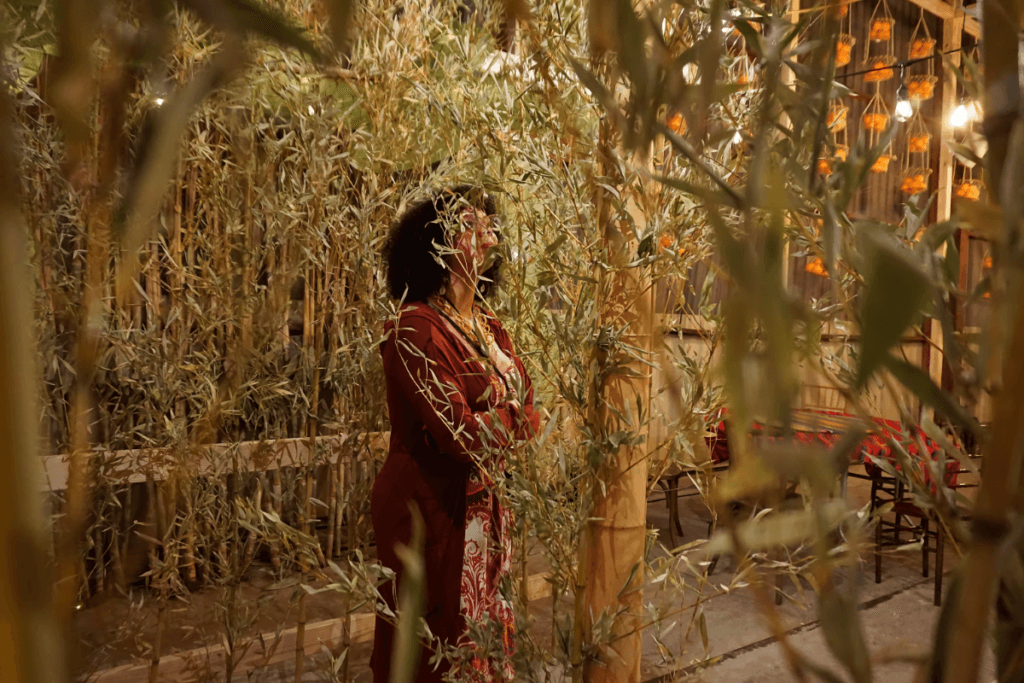
Allie Hankins
By My Own Hand, Part 5: INVISIBLE TOUCH is a quintet featuring prominent dancers from Portland, Brooklyn, and Boston who populate the space with light, shadow, haunted objects, dancing, and songs. The Documentation & Storytelling Fund will be used to support filmmaker Roland Dahwen as he documents the creation and premiere of INVISIBLE TOUCH in Portland, OR, through rehearsal footage, interviews, and performances. A core value of this work lies in the decade-long history they share as collaborators, friends, and community members. This project will highlight those shared histories and the intersections of their respective creative processes.
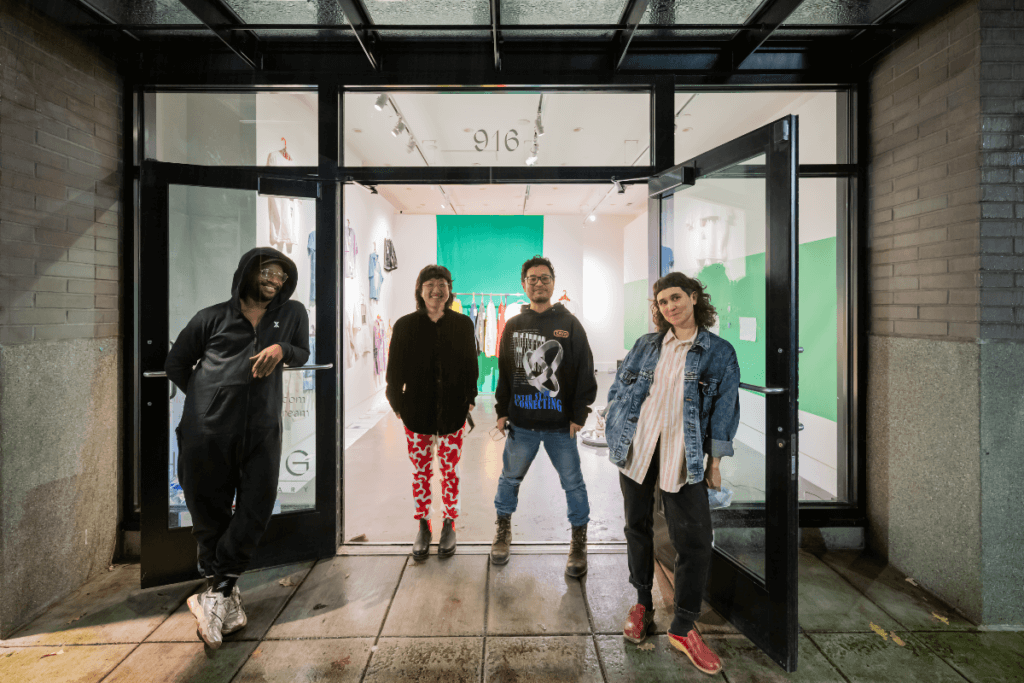
Amanda Ekery
Árabe, a project featuring 12 original songs and accompanying essays about Syrian and Mexican shared culture and history, is touring as the Árabe Mahrajan (Mahrajans were part of Syrian homeland culture, similar to block parties used for community formation) with performances and readings across the United States. Documentation & Storytelling funds will be used to showcase and preserve four Árabe Mahrajan events by paying for local videographers in NYC, El Paso, Dallas, and Chicago, to document not only the performances but the people, communities, and stories that are present at each event.
Read more about Amanda Ekery’s inspiration and research for Árabe in her Voices from the Network post, “Yenobak Eih?” (What Do You Get?).
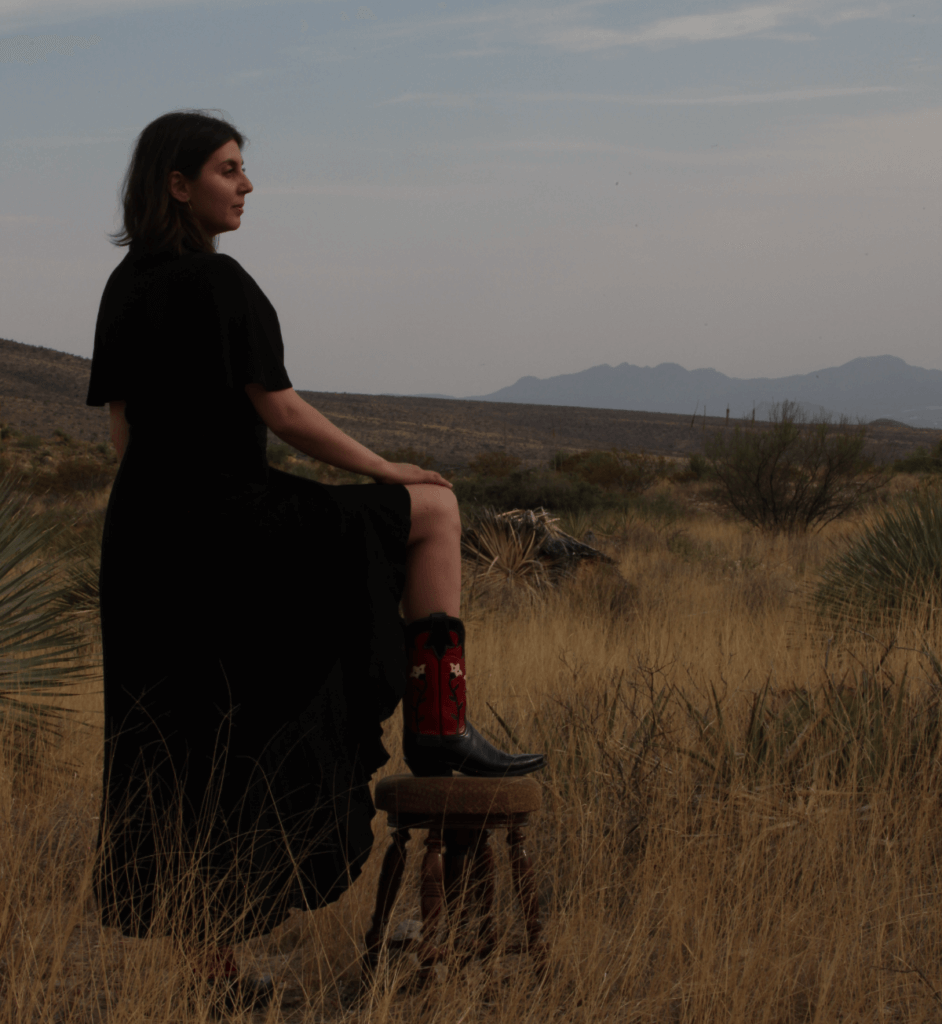
Ananya Dance Theatre
Yorchhā, Ananya Chatterjea’s transnational feminist dance language, articulates an aesthetic of South Asian maximalism that combines traditional Odissi, Vinyasa Yoga, the martial art Chha, visual folk art traditions, and her Bengali heritage of Baul/Sufi syncretic-mystic musician poets. Yorchhā’s 2025 evolution, Yorchhā Jugaad, presents the GloFFUC (GLObal Feminist Funk Underground Club), where feminists, exhausted from their constant struggles against injustice, gather to renew their resolve. The Documentation & Storytelling Fund will be used to create a film to capture this investigation, which will then become a key document to support Ananya Dance Theatre’s launch of a Yorchhā Certification process in 2026.
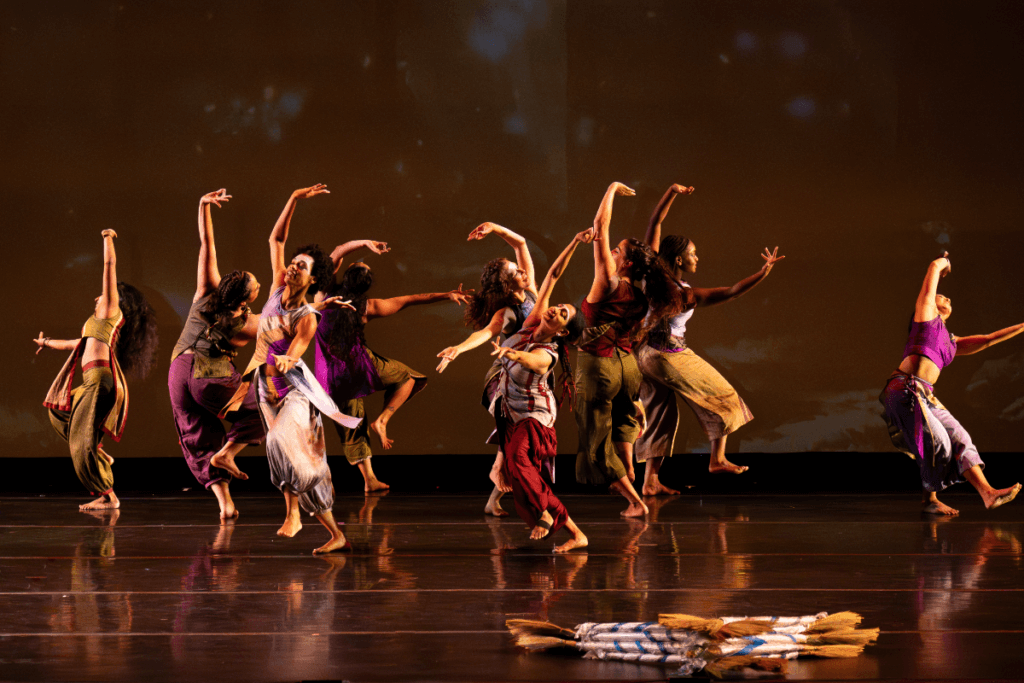
Art of Resistance: Documenting AL Death Row — Kerrigan Casey
Expanding Resistance transforms the Alabama Death Row Archive (housed at the Restorative Justice Lab at the University of North Alabama) into a traveling multimedia exhibit that centers visual and audio artifacts from people on death row as well as their surviving loved ones, to highlight various forms of resistance to capital punishment in the state that sentences more people to death per capita than any other. Documentation & Storytelling funds will be used to create an online digital archive that collects essays, interviews with people formerly incarcerated, art from incarcerated people who have now been executed, footage of panel discussions and artist talks, audience responses, and media coverage.
Kerrigan Casey is a Southern Artists for Social Change cohort member.
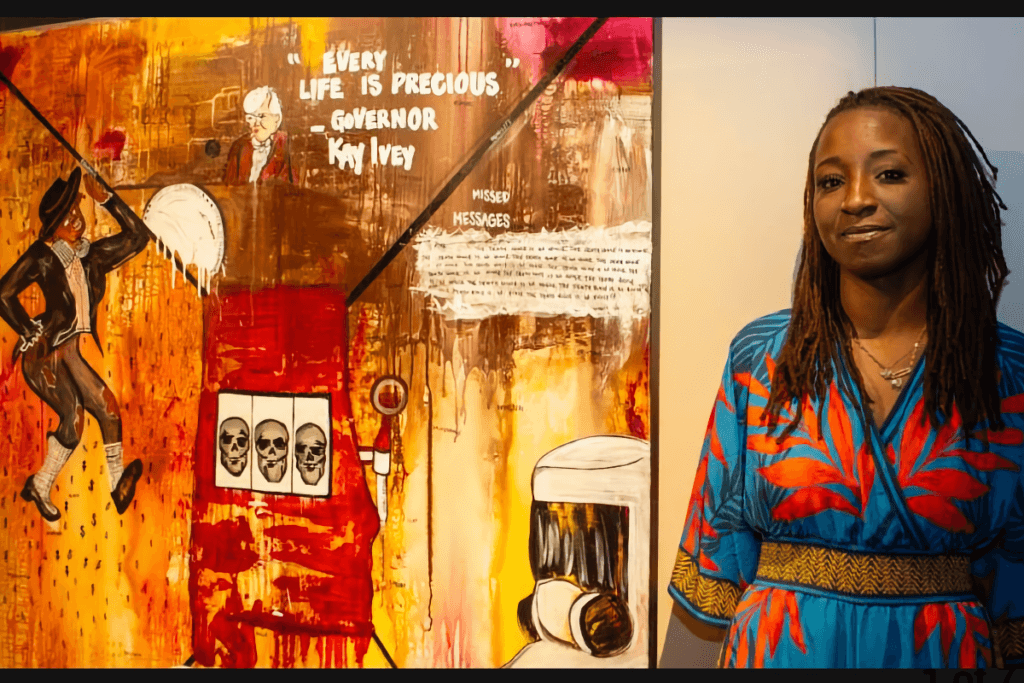
Art2Action, Inc.
DRONE, a new play by Andrea Assaf, is a transdisciplinary performance project integrating theater, live music, emerging technologies, and artistic containers for public dialogue. It explores the drone as a metaphor for how we become desensitized to daily violence (domestic and global), the question of Moral Injury, and the effects of remote-control warfare on the human soul. The Documentation & Storytelling Fund will support video documentation of the first full workshop production of DRONE, July 31-Aug 3, 2025 at the Detroit Public Theatre, presented by the Arab American National Museum.
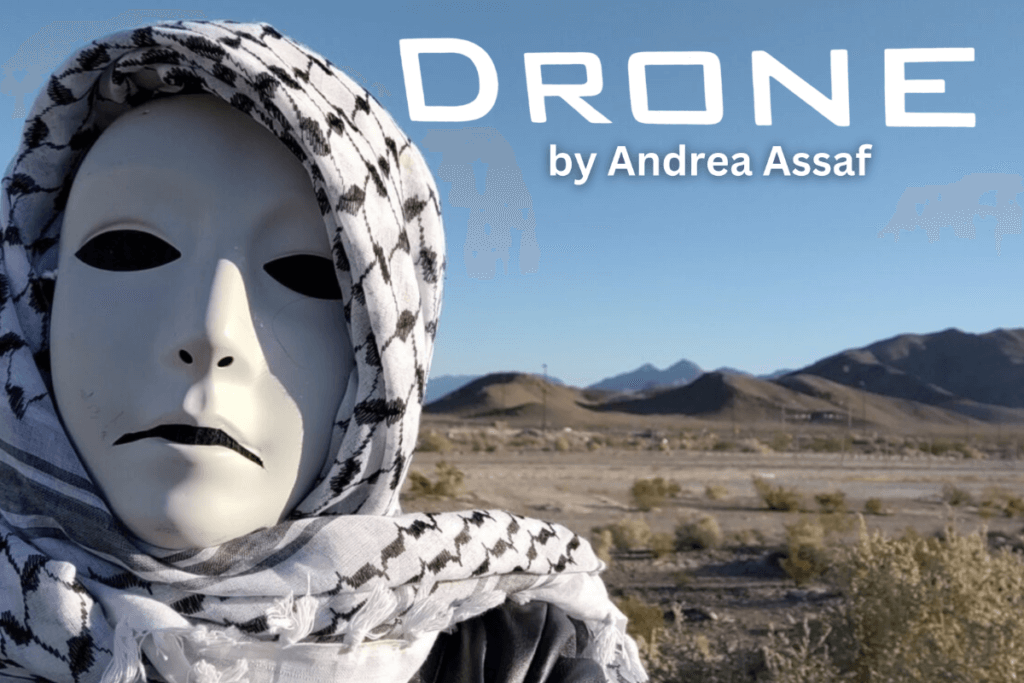
Back 2 Purpose
Back 2 Purpose: The Documentation is a storytelling project that highlights Back 2 Purpose’s evolution as a Hip-Hop duo and youth mentor, by combining recordings of the duo’s regional school tour with archived podcast footage and behind-the-scenes interviews. Through social media-ready content and visual storytelling, Back 2 Purpose showcases the movement to reclaim Hip-Hop as a tool for healing, purpose, and community transformation. Documentation & Storytelling funds will be used to capture live tour performances, student interactions, and community events, and to curate archival footage from previous performances.
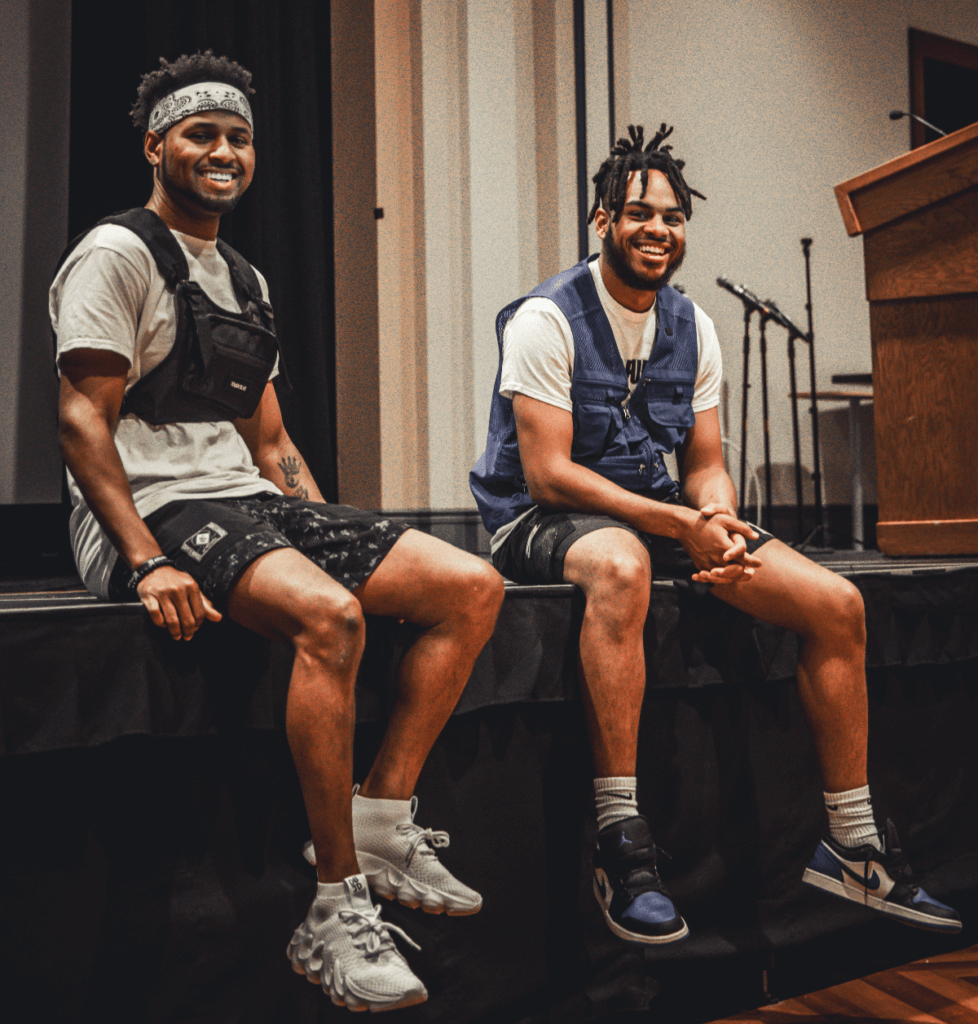
Blue13 Dance Company
Soliloquy (2024), created as a reaction to the COVID-19 pandemic’s disproportionate effects on people of the Global Majority, was an immersive, site-specific dance work performed at Heritage Square in Los Angeles that shone a spotlight on the othering and invisibilization experienced by BIPOC, intersectional LGBTQIA+, and disabled communities. Documentation & Storytelling funds will be used to edit the many hours of HD video footage of this work into a short film that can serve as a standalone dance film, a pitch to presenters to tour the work around the world, and documentation for future grants.
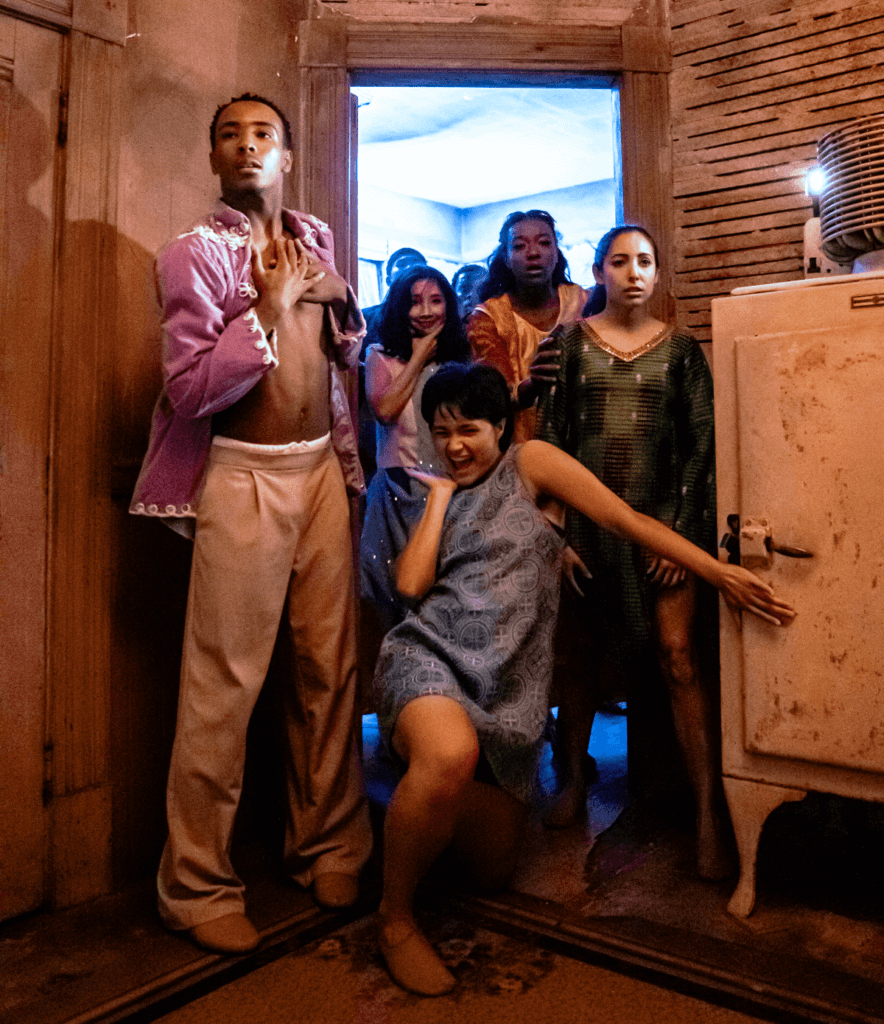
Bulbancha BeHolders
Bulbancha BeHolders witnesses and documents “our selves, our communities, and our ecosystem” in relation to art, culture, intimacy, and environmentalism, by living out Southern, Black, Indigenous, and trans experiences in agency and power. Across multiple individual projects as well as a collective project planned for 2026, Bulbancha BeHolders will use Documentation and Storytelling funds to help coordinate interviews and photoshoots with community members to discuss the relationships between creativity, intimacy, and environmentalism. Funds will also be used to document the manifestation of Keyshia Pearl’s 2026 Masking regalia, and continue to document Simone Immanuel’s performances.
Simone Immanuel + Isaiah Simon (Bulbancha BeHolders) are Southern Artists for Social Change cohort members.
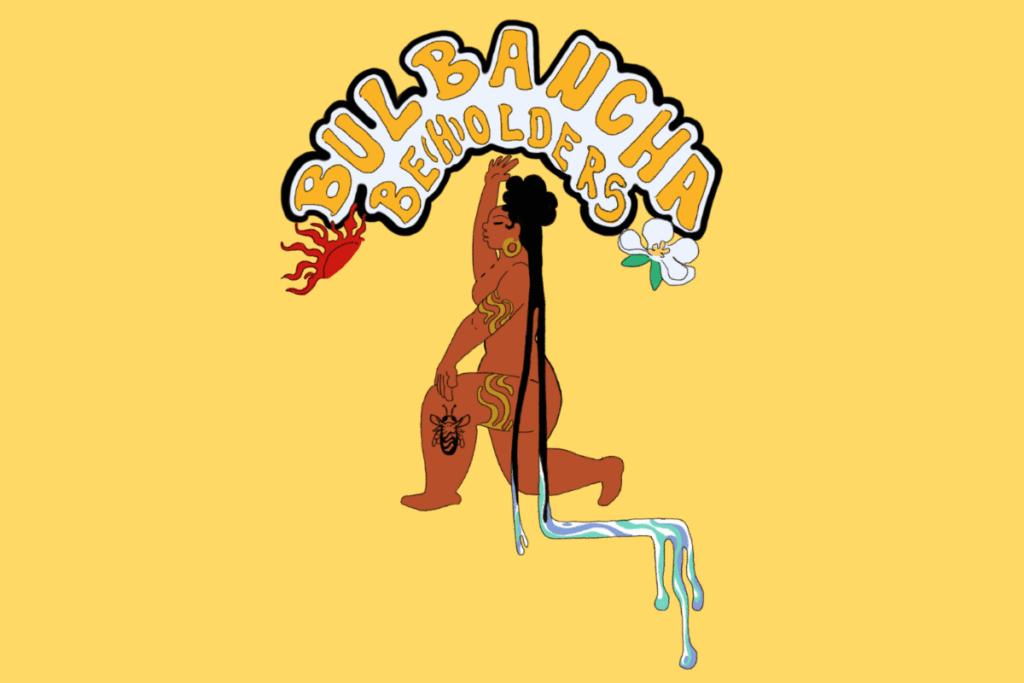
CANOA (Caribbean and New Orleanian Arts)
With Garifuna Stories, Bernardo Guerrero and Tomas Montoya will use Documentation & Storytelling funds to create an archive of interviews with a multi-generational group of cultural practitioners from the New Orleans Garifuna community. These interviews will illuminate the challenges around migratory status, struggles for belonging, and access to resources that members of the Garifuna community face as they interact with schools, government officials and other civic organizations. The stories will be shared through an exhibition, to be housed at CANOA, that will include audio recordings and transcriptions accompanied by photo documentation of interviewees.
CANOA is a Southern Artists for Social Change cohort member.
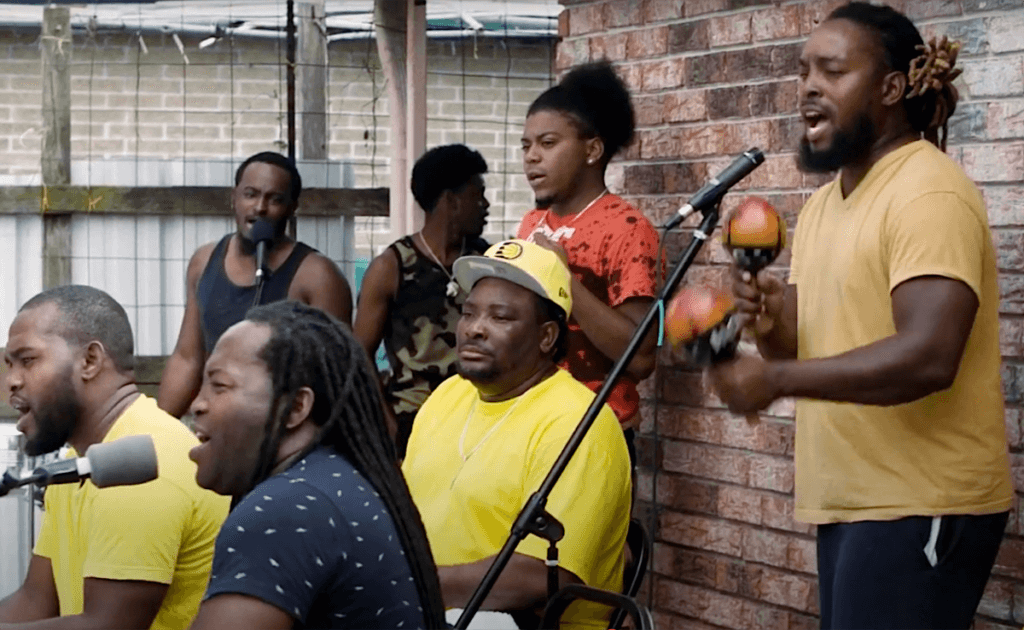
Chris Friday
Solid Gold is a multi-media performance by Chris Friday, in collaboration with Miami-based poet Arsimmer McCoy and Miami-based musicians Kendall “King” Friday and Claudens Louis, that highlights the literal and metaphorical safe-havens Black and POC people in Miami, Florida create for self-preservation. Entitled Solid Gold as a reference to the tradition of bronzing precious childhood keepsakes, and the alchemical process of turning trash into gold, the performance is an activation of Friday’s first solo museum exhibition, Where We Never Grow Old. The Documentation & Storytelling Fund will be used to produce a living archive of both the exhibition and the performance in the form of a cinematic short film.
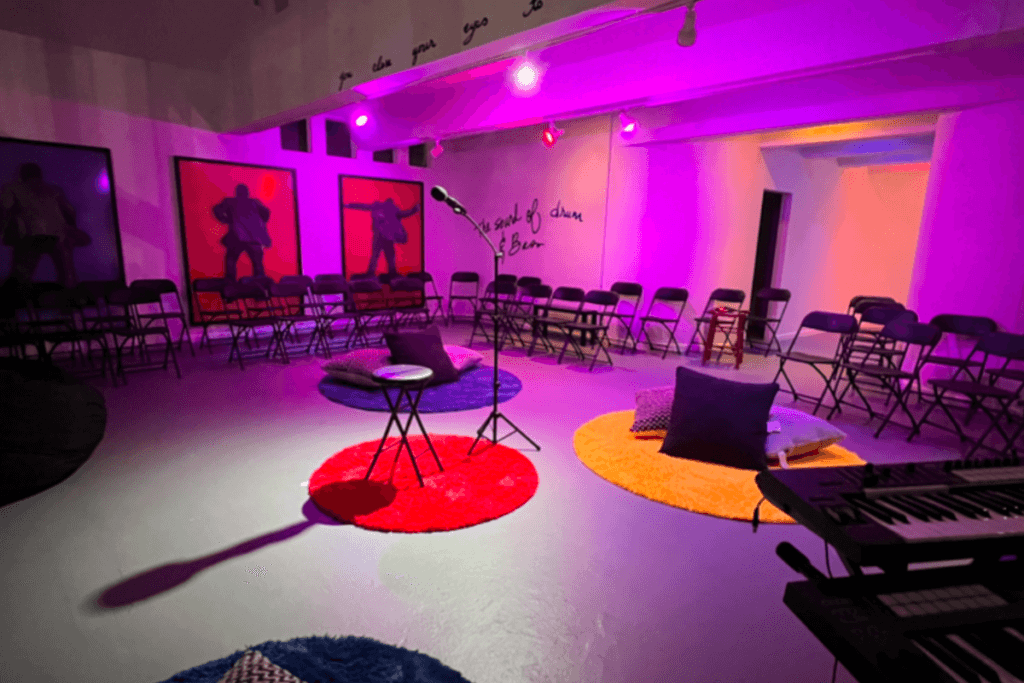
CONTRA-TIEMPO Activist Dance Theater
A 20-Year Legacy is a digital project honoring CONTRA-TIEMPO Activist Dance Theater and its Artistic Director Ana Maria Alvarez. To date, they’ve powerfully embodied their mission to create a future where all people are awakened to a sense of themselves as artists and social change agents. This project celebrates their impact through multimedia content, intergenerational virtual gatherings, and collaborative dance works, keeping alive the power of dance as social action. Documentation & Storytelling funds will be used to facilitate press outreach and public-facing communications, and to produce multimedia content that includes social media storytelling and video collaborations with peer LA-based dance companies that are also celebrating their 20-year anniversaries.
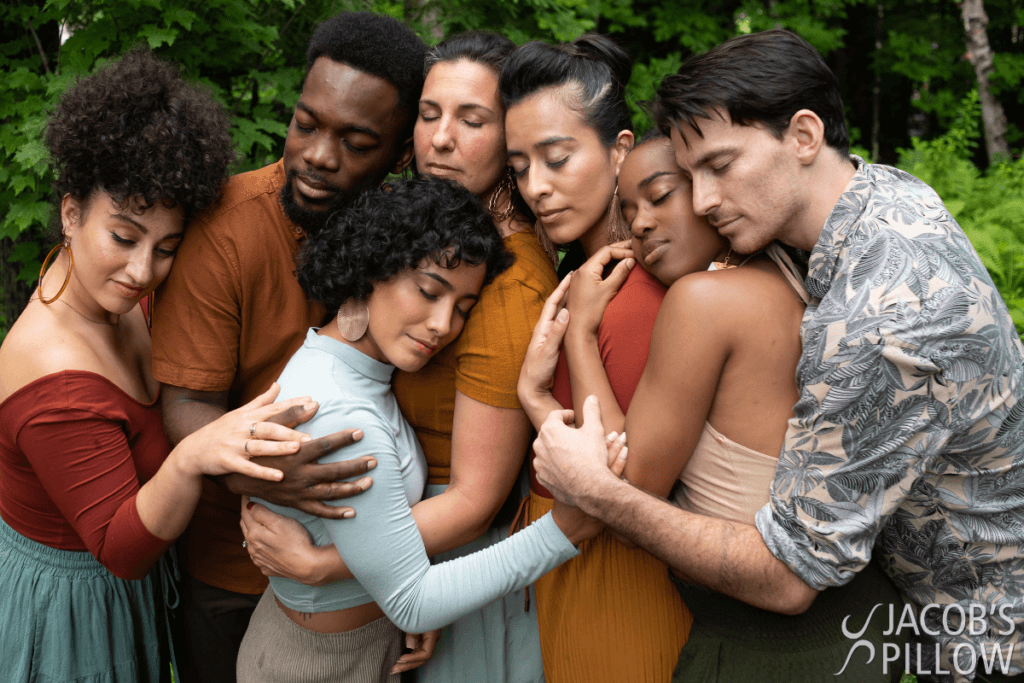
Deborah Hunt
Citizen of My Work 3 & 4 consists of the creation of two 25-minute videos, in a series of six, that curate the work of artist Deborah Hunt across a 53-year trajectory of self-devised theater, mask work, and object theater. Through these publicly shared “home movies,” Hunt is transforming a vast physical archive of photos, printed materials, and videos in various formats, that together document a practice once shaped solely by live performance, but that now weaves between the tactile and the digital, the seen and the remembered. Documentation & Storytelling funds will be used to produce video three, tentatively titled The workshops, collaborations and resistance, and four, titled Hurricanes and Giants.
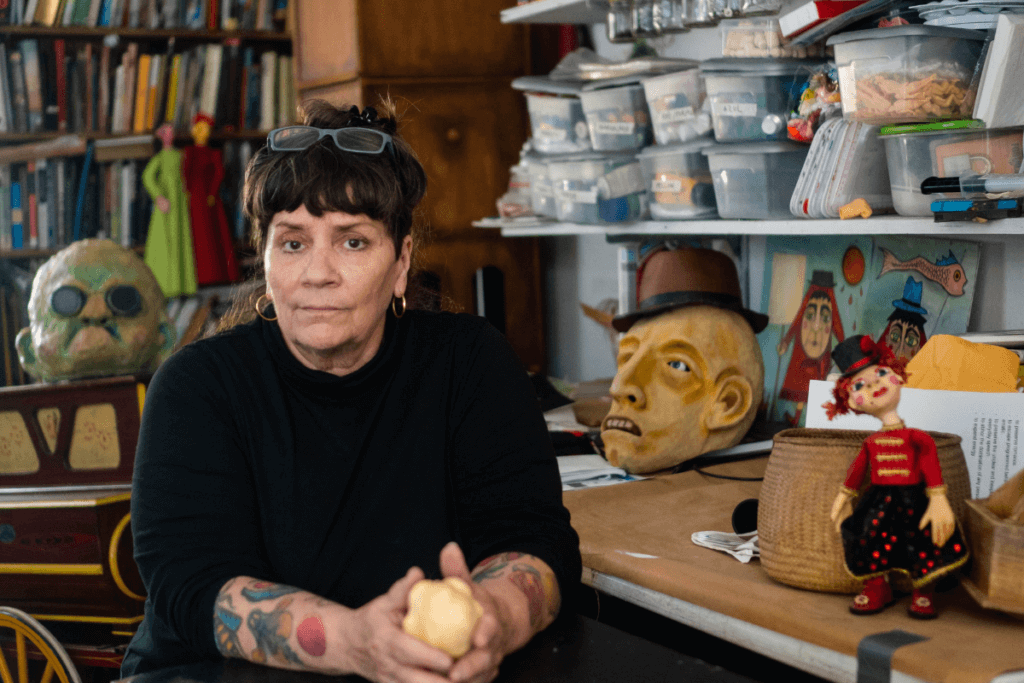
Dorian Wood
Canto de Todes is a 12-hour composition and installation inspired by a lyric by iconic Chilean songwriter Violeta Parra. It is a touring project that expands with every incarnation, creating a series of site-specific, immersive spaces for attendees to project their personal experiences. Documentation & Storytelling funds will be used to produce two promo videos that incorporate a new self interview, new footage and new narration. These videos will form the core of an expanded press kit that can promote the forthcoming album and help the artist continue to present the work at new locations.
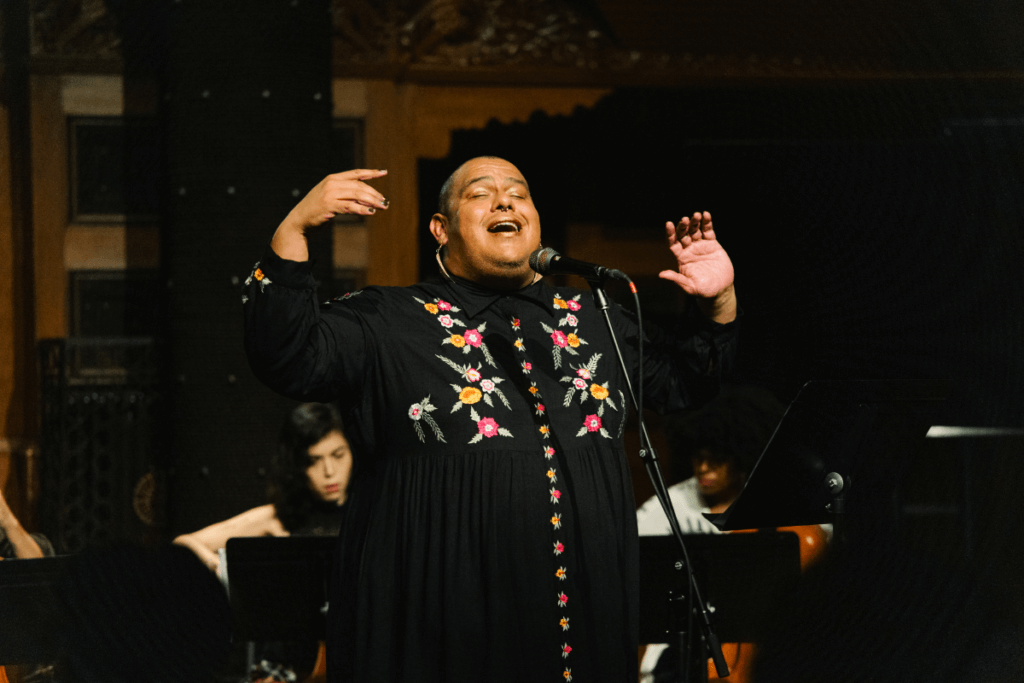
Einar Leliebre Nuñez
La Rumba me Llama (The Rumba Calls Me) was a live concert in June 2024, funded by NPN’s Artist Engagement Fund, followed a year later by a second performance of the same name, this time with the theme “Honoring the Ancestors,” at La Peña Cultural Center in Berkeley, CA. The Documentation & Storytelling Fund will be used to produce a new incarnation of La Rumba me Llama as a recorded audio documentation of the project, that will combine recordings from the show with new recordings featuring renowned guest artists from both concerts who are important in the tradition of Afro-Cuban music.
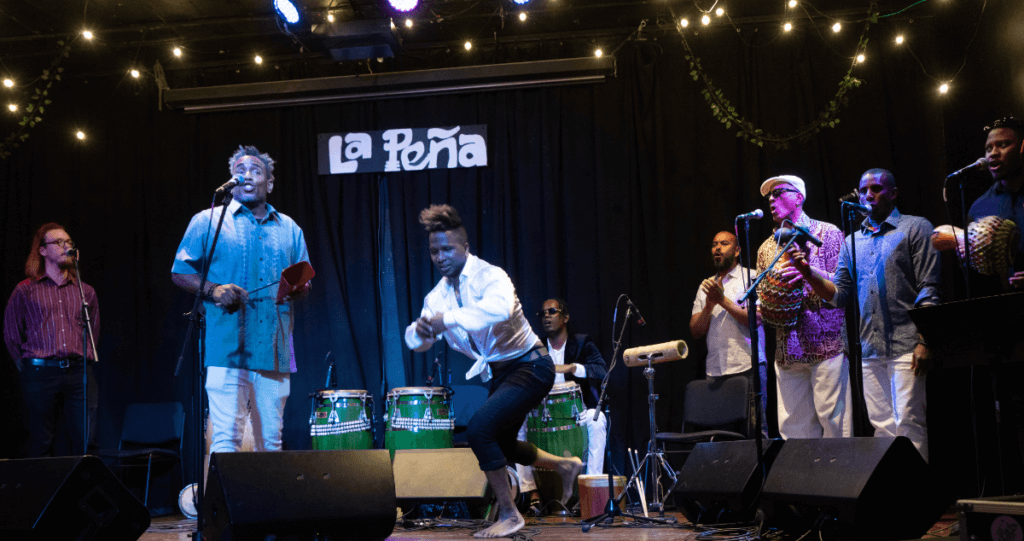
Elia Arce
Elia Arce is an artist and cultural activist whose 43-year career includes experimental theater, film and video, writing, spoken word, and installations. Her work, developed through the years in response to political shifts as well as her experiences as a Central American immigrant artist with the privilege of dual citizenship, lets her share with younger Central American immigrants the homeland hardships of their parents’ generation. The Getty Museum is archiving a collection of Arce’s California-based art, with plans to record an accompanying oral history. Inspired by that model, Arce will use Documentation & Storytelling funds to produce similar retrospectives in other cities where she has lived and worked, like New York and Houston, in 2027 and 2028.
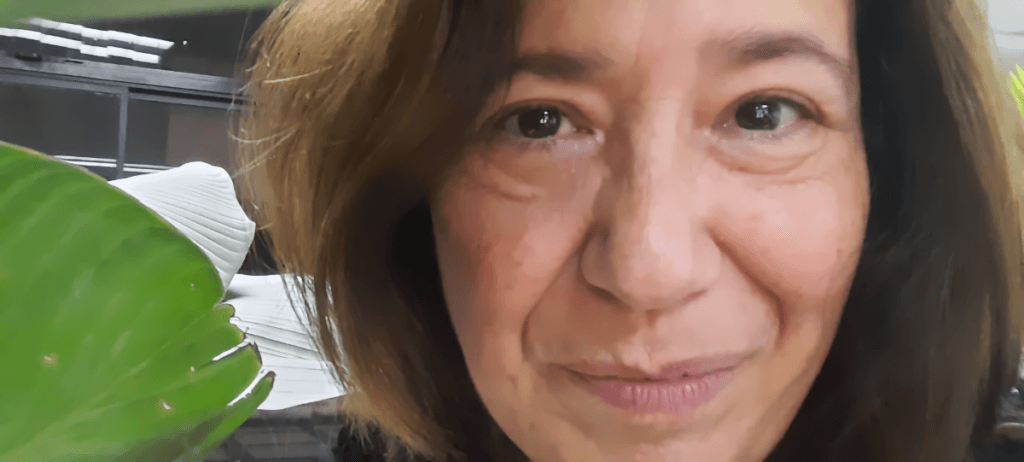
Gather Hear
Gather Hear concert programs are designed to contextualize classical music for underserved audiences. In Gather Hear North Carolina, pianist Miki Sawada and rapper/composer Chris Thompson will travel around North Carolina with a piano, giving free performances in areas where professional classical music concerts are not available. The show combines classical piano, rap, and Thompson’s original compositions, contextualizing classical music within Black history and contemporary American society. The tour will be documented via writing, photos, social media, and videos that combine vlog-style footage shot by Miki and Chris with professionally shot performance footage. The Documentation & Storytelling Fund will be used to hire professional videographers to film the performances.
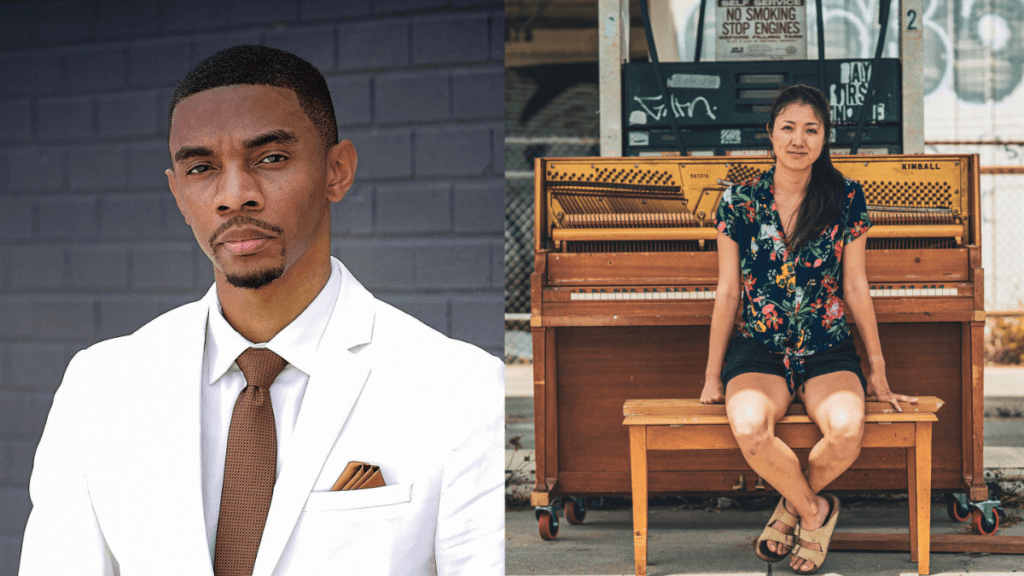
Goat in the Road Productions
Gallatin Alley examines 1870s New Orleans through an immersive historical mystery featuring John Baptiste Jourdain, the city’s first Black detective. Audience members will choose their own paths: they can follow Detective Jourdain’s murder investigation, shadow club owner “Tiny” Marie LeCroix, or observe various musicians, regulars, and roustabouts. Documentation & Storytelling funds will be used to film and produce the Gallatin Alley Digital Tour, which will capture the experience of Gallatin Alley through a single, continuous camera shot that explores the space and characters as if physically present. This digital video experience will serve as a professional-quality visual record that enhances Goat in the Road’s ability to share this ambitious work with funders, presenters, and future audiences.
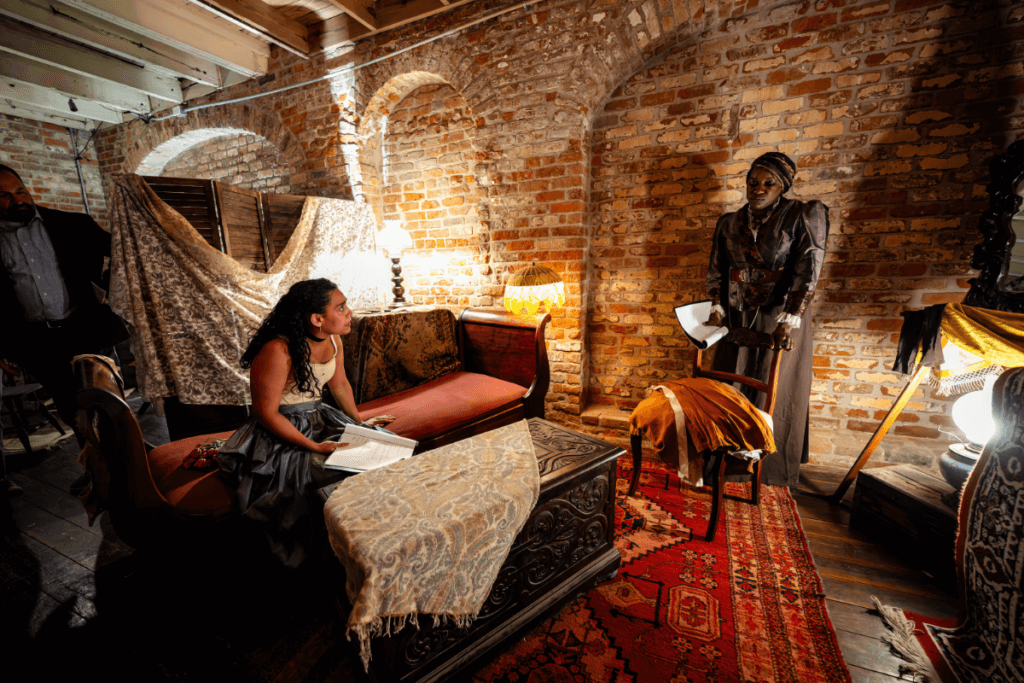
Jesse Factor
The Marthaodyssey is a solo evening-length speculative fantasy through which dance artist Jesse Factor animates Martha Graham, “the high priestess of modern dance,” to remixed ideas from the sonic landscape of Madonna, “the queen of pop.” Part high modern dance, part pop confection, part drag extravaganza, The Marthodyssey’s aesthetic presentation moves Graham’s tradition of lights and tights into sleek pop spectacle and uncanny lip sync. Documentation & Storytelling funds will be used to produce promotional video reels and images.
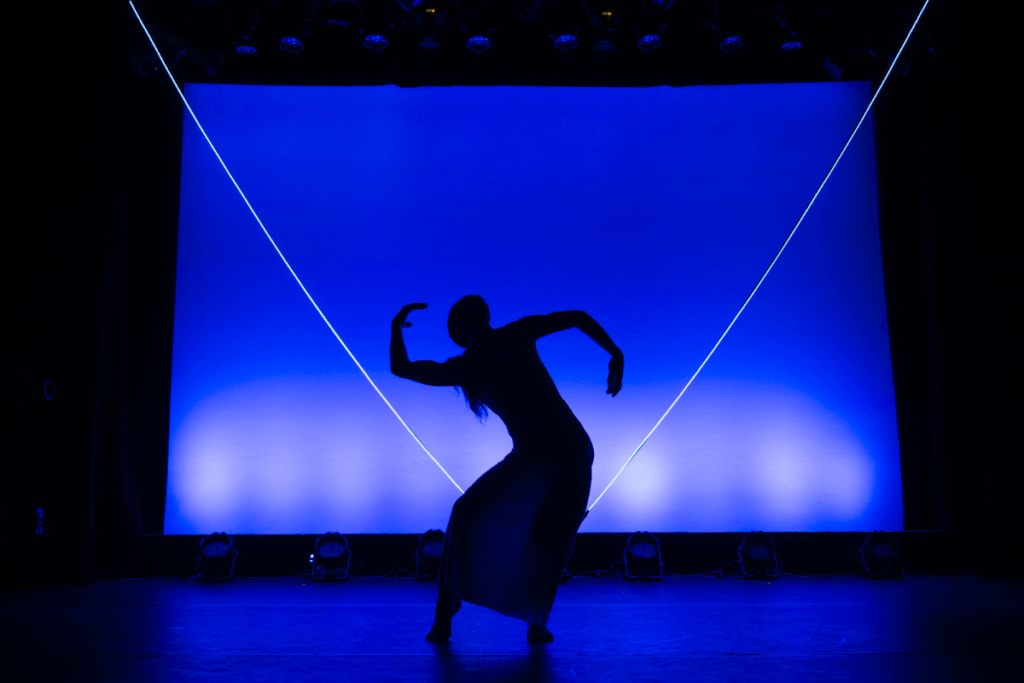
José Joaquín García
How I Survived the Lower East Side in the 70s With My A.M. Radio is José Joaquín García’s coming of age story with music, about attending public school from 1969 to 1978 in New York City’s Lower East Side neighborhood. The story focuses on the rich music curriculum that began to suffer due to underfunding during the Nixon administration. Documentation & Storytelling funds will be used to produce a website where García will share photographs, interviews with neighborhood elders, and historical records.
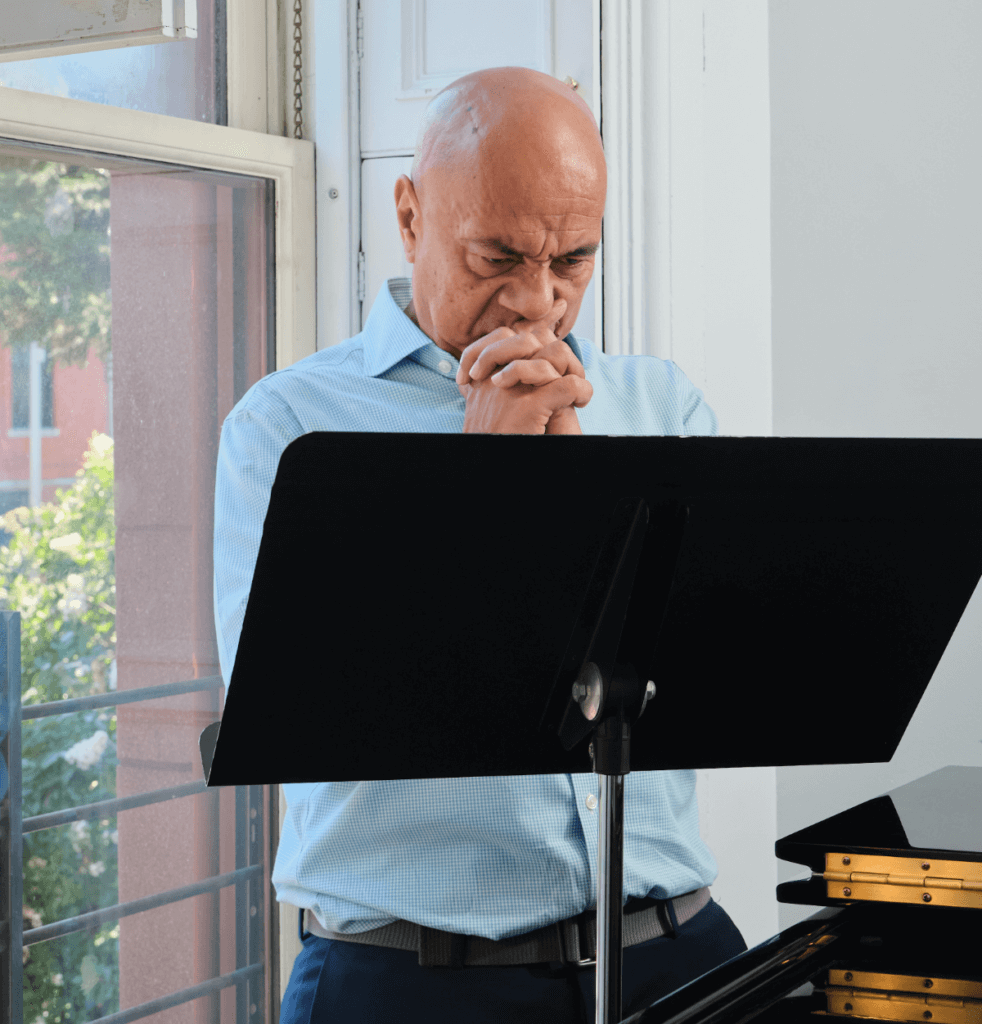
KM Dance Project
Raw Fruit features original music created by sound artist free feral, as well as poetry, text, and vocalizations by Sunni Patterson and Performers. The soundscape is at the forefront of this work and is an integral part of the storytelling. It facilitates audience immersion into an experience akin to a ritual, with musical and vocal movement that energizes the performers and viewers. KMDP will use Documentation & Storytelling funds to program KM Dance Project’s Creative Somatic Workshop, a live event that mirrors the Raw Fruit listening experience, where KMDP will generate a live recording of the Raw Fruit soundtrack.
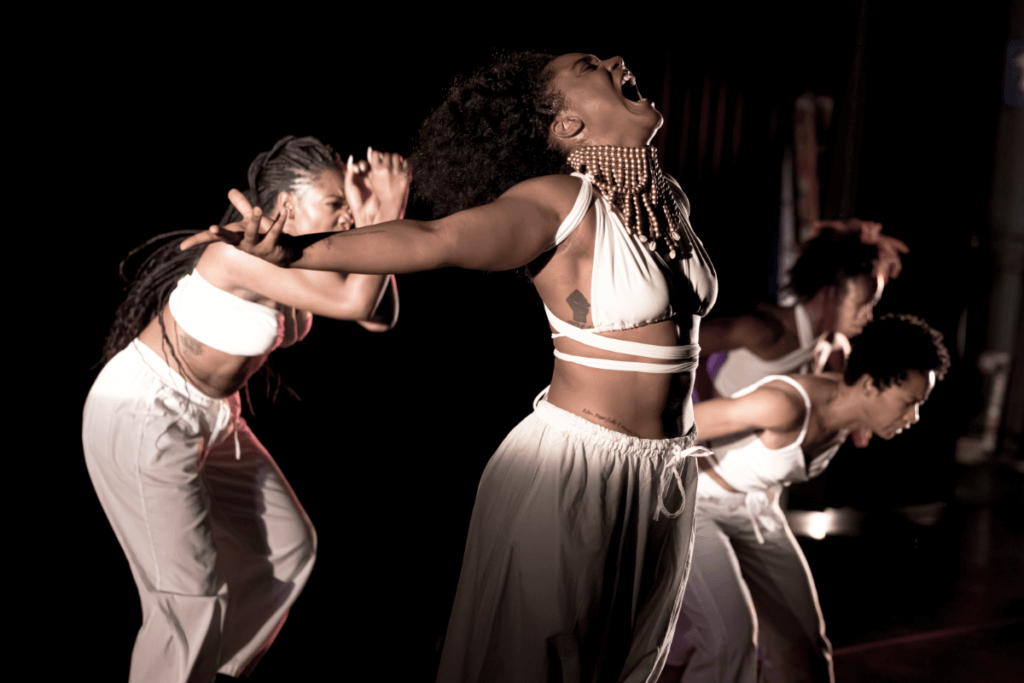
Kyle Marshall Choreography
The Julius Eastman Trilogy consists of three dances embodying the visionary music, life and legacy of singular composer Julius Eastman (1940–1990). The cornerstone of this trilogy, Femenine, based on Eastman’s composition of the same name, premiered with the support of the NPN Development Fund in March 2025. The other two dances–Gay, a duet on eternal love set to Eastman’s “Gay Guerrilla,” and Joan, a quartet celebrating power over tyranny set to his score for 10 cellos—premiered in November 2024. KMC is using the momentum of this trilogy to restructure as a 501(c)(3) organization, and will use the Documentation & Storytelling Fund to organize a photoshoot capturing key moments in each of the three dances, while also documenting KMC’s full company of performers at this momentous juncture.
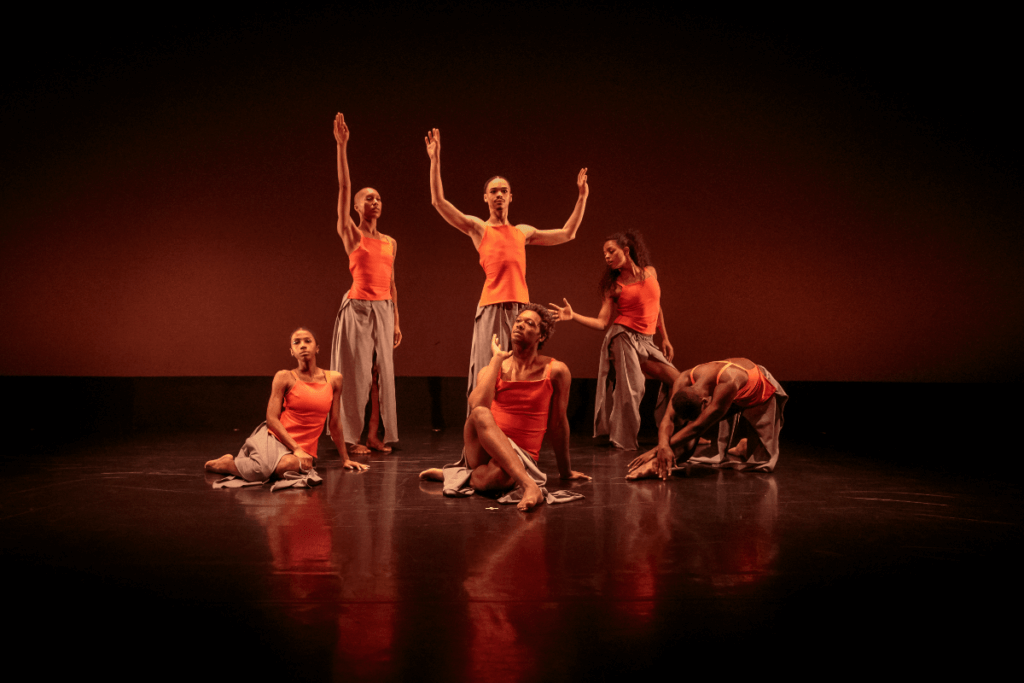
L. Kasimu Harris
The Vanishing Black Bars & Lounges series is a multifaceted project that explores means for the long-term sustainability of Black-owned bars, lounges, and other establishments in New Orleans, Clarksdale (MS), Chicago, Detroit, Los Angeles, Pittsburgh, the Caribbean Island of St. Lucia, and other places throughout the African diaspora. The Documentation & Storytelling Fund will support a field guide that illuminates bar owners and culture bearers through interviews, oral histories, and profiles, as well as fiction and poetry written by various writers, both within and outside of New Orleans. This field guide departs from merely listing businesses and is inspired by later editions of The Negro Motorist Green Book and literary magazines such as The New Yorker.
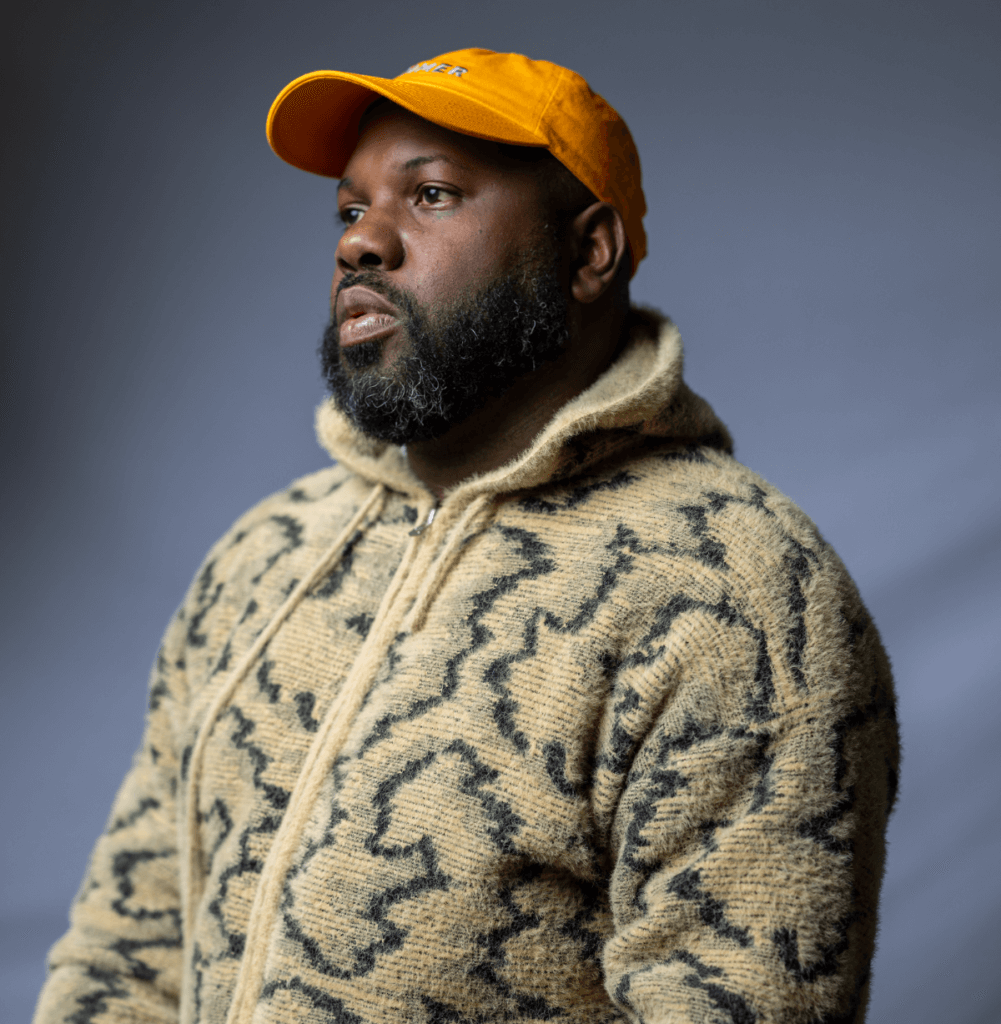
Letta Neely
Letta Neely’s one-person show, Pulling It All Into The Current, offers a look at the world through the eyes of ten characters as they navigate the minefields and playgrounds of life. These stories of teenagers, veterans, elders, addicts, queers, teachers, and others mingle haphazardly alongside and within each of us as they are “pulled into the current” landscape. Documentation & Storytelling funds will be used to edit the photos and videos captured throughout the creative process and from past performances in order to produce a high-quality film version of the work, which will serve as both an artistic artifact and, along with a podcast series, a promotional tool to expand the reach and impact of the piece beyond live performances.
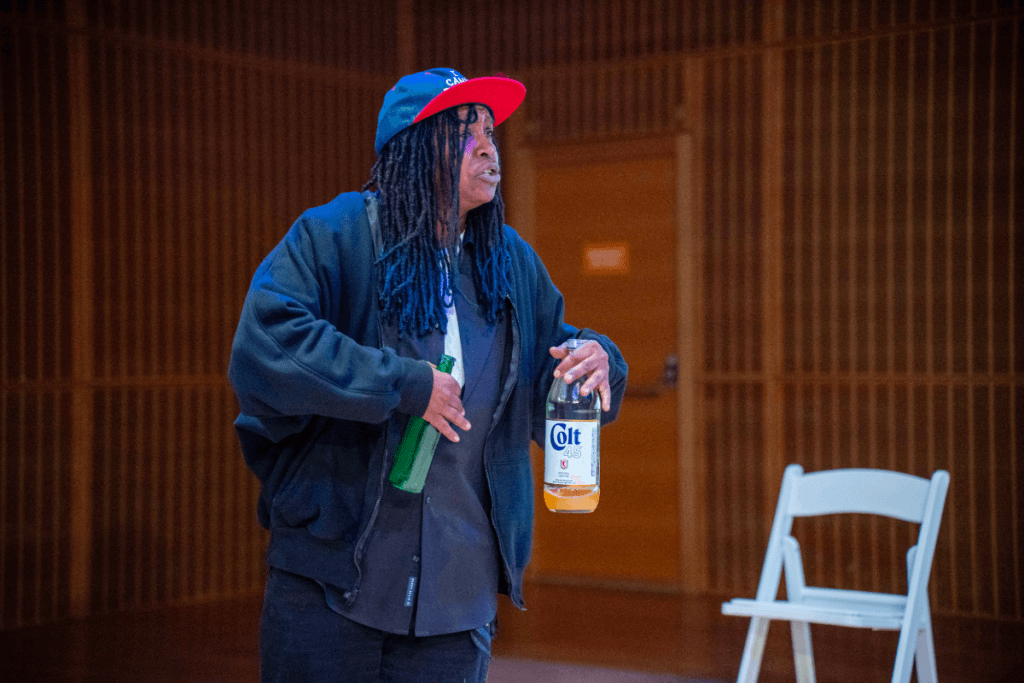
Nana Kumi
The Spirit in Our Roots is a multimedia, multigenerational land-based initiative rooted in Mississippi that uplifts the collective voice of Black agrarians, land stewards, and wisdom keepers across Mississippi and Louisiana. Centered on food sovereignty and racial justice, the project weaves African and Afro-diasporic growing practices as ancestral technology to reclaim land, memory, and communal resilience. Documentation & Storytelling funds will be used to support the creation of an expansive photo shoot, and the resulting images will be used in marketing materials and serve as the cover for a community book that will be produced at the close of the project.
Nana Kumi is a Southern Artists for Social Change cohort member.
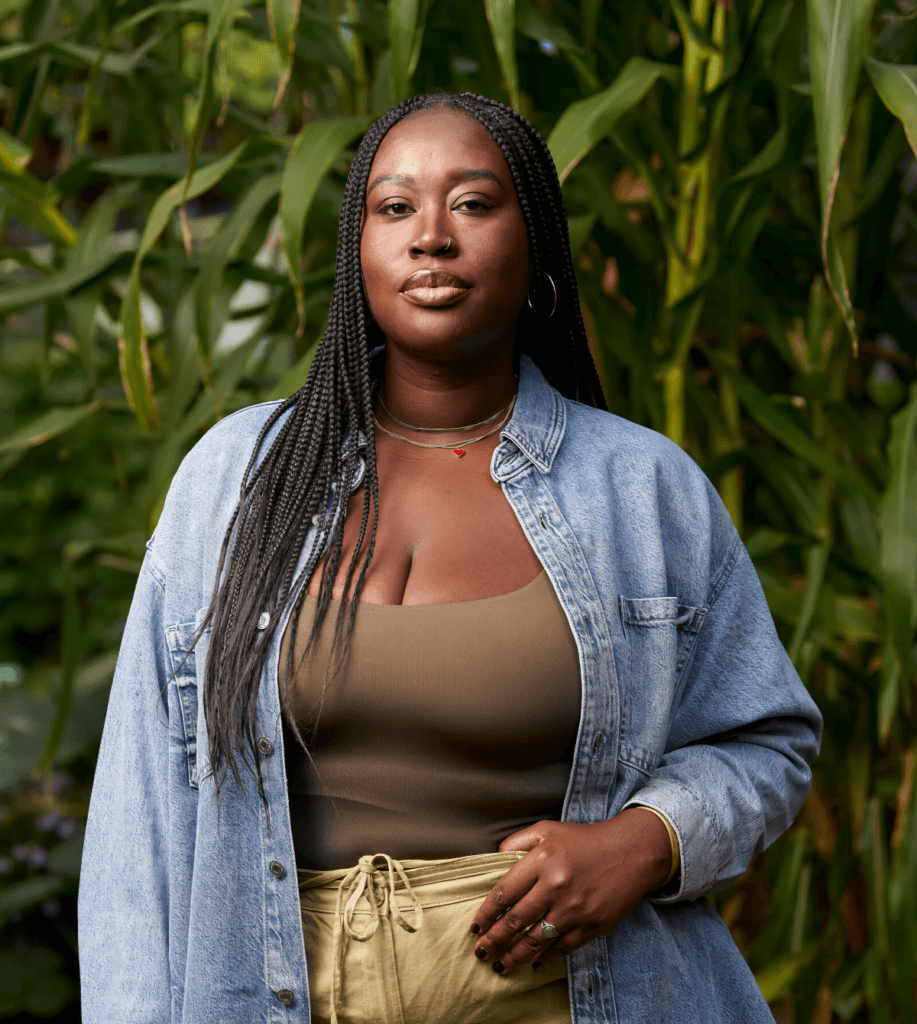
Pioneer Winter Collective
Apollo is a dance-theater work exploring intergenerational queer dynamics, memory, HIV/AIDS, and legacy. A biomythography grounded in devised dance-theater, Apollo explores intergenerational queer dynamics, memory, HIV/AIDS, and legacy as it delves into the intersection of cultural memory, myth, and storytelling. Documentation & Storytelling funds will be used to enable the integration of a service component that documents and digitizes the stories, ephemera, photos, and videos of local elder artists. This builds upon the approach Pioneer Winter Collective has used with the three elder performers in Apollo, where their narratives and histories were intricately woven into the performance.
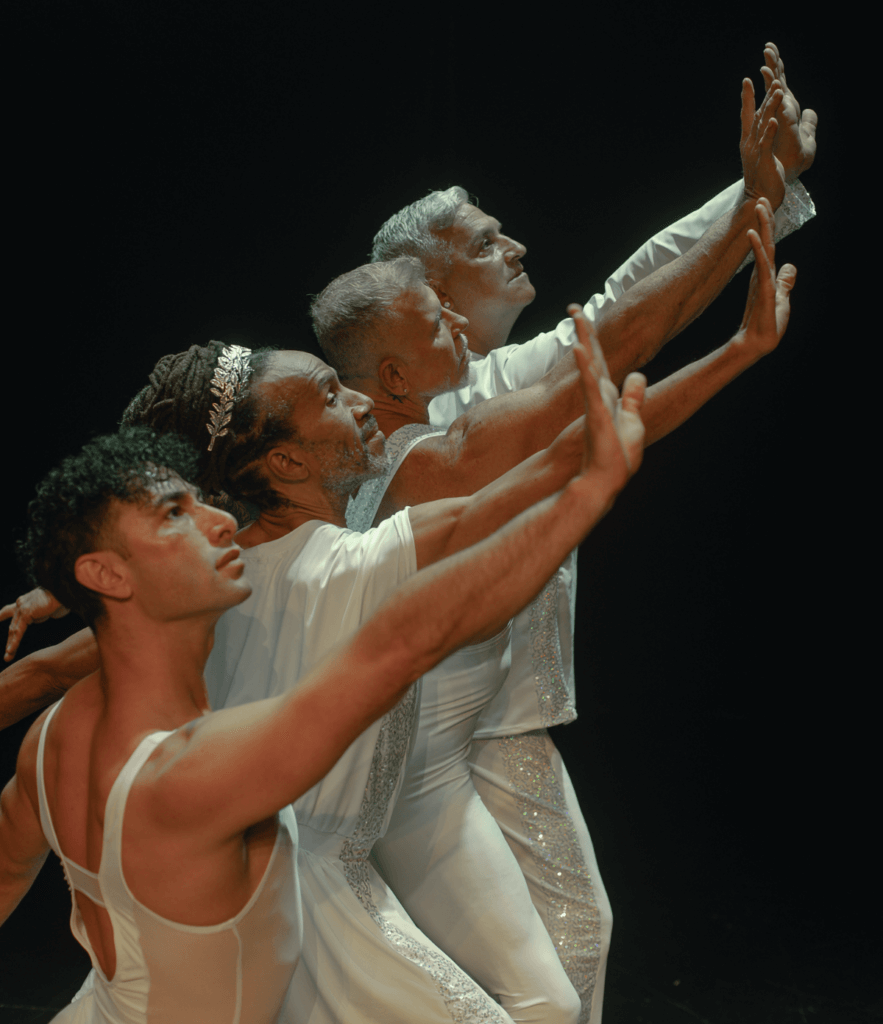
Rarara!
Until, Until, Until…: The Performative Lecture, extends the work of Edgar Arceneaux’s award-winning live theater piece Until, Until, Until…, which explores Ben Vereen’s controversial 1981 presidential inauguration gala performance, where Vereen’s powerful critique of minstrelsy was misunderstood and distorted by the media. This more intimate, interactive version, which combines excerpts from the original performance with film and virtual components, gives students and scholars an opportunity to engage with the work, confront historical erasure, and explore the complexities of artistic resistance. The Documentation & Storytelling Fund will be used to design and produce new virtual assets to be used on the website, across social media, and in an updated digital promotional packet.
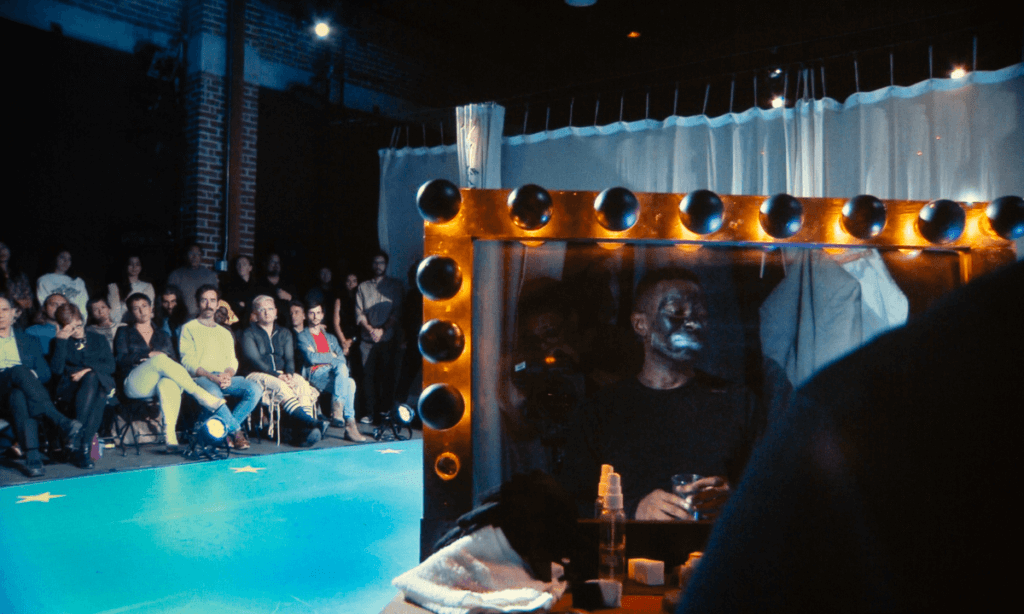
Raven Chacon
Tiguex, from the Tiwa word meaning, “the valley between Sandia and Isleta pueblos,” is a large-scale musical composition consisting of twenty overlapping movements performed over the span of a day across the city of Albuquerque, NM, which the composer Raven Chacon has called home for most of his life. This collaborative project is realized with the help of over 150 musicians from different diverse music communities throughout the city, and will be documented via a livestream and, movement by movement, through local videographers. Documentation & Storytelling funds will be used to support the capture of high quality video and audio, as well as the cost of post-production to create a longer format (potentially feature-length) film.
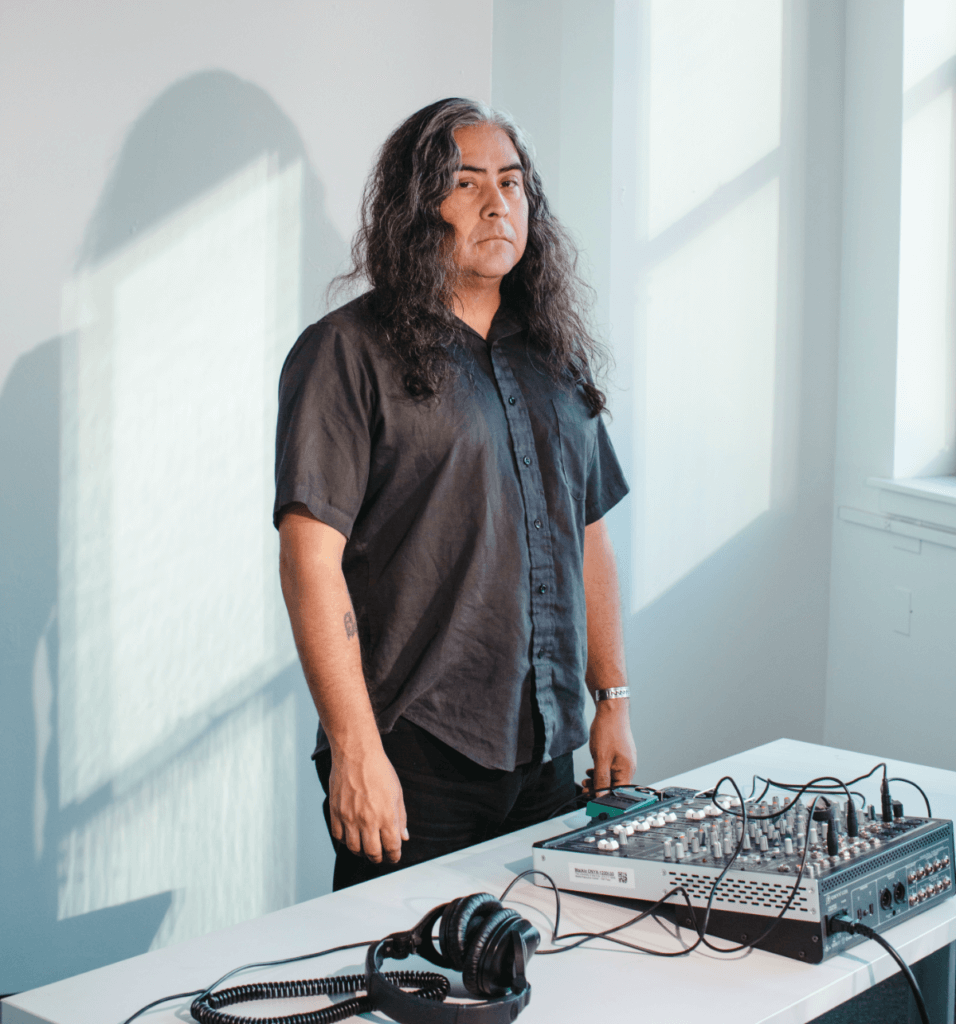
Rodney Garza
El Pazchuco for Prez is a lampoon of the American electoral system centering on El Pazchuco, a zoot-suited lecturer who is tired of the politricks and decides to shake things up by throwing his tando (Zooter hat) into the political arena. Rodney Garza is documenting the creation and eventual staging of El Pazchuco for Prez with personal video footage, combined with professionally shot video footage. Documentation & Storytelling funds will be used to hire one or more professional videographers to capture rehearsals and performances of the production in San Antonio, TX.
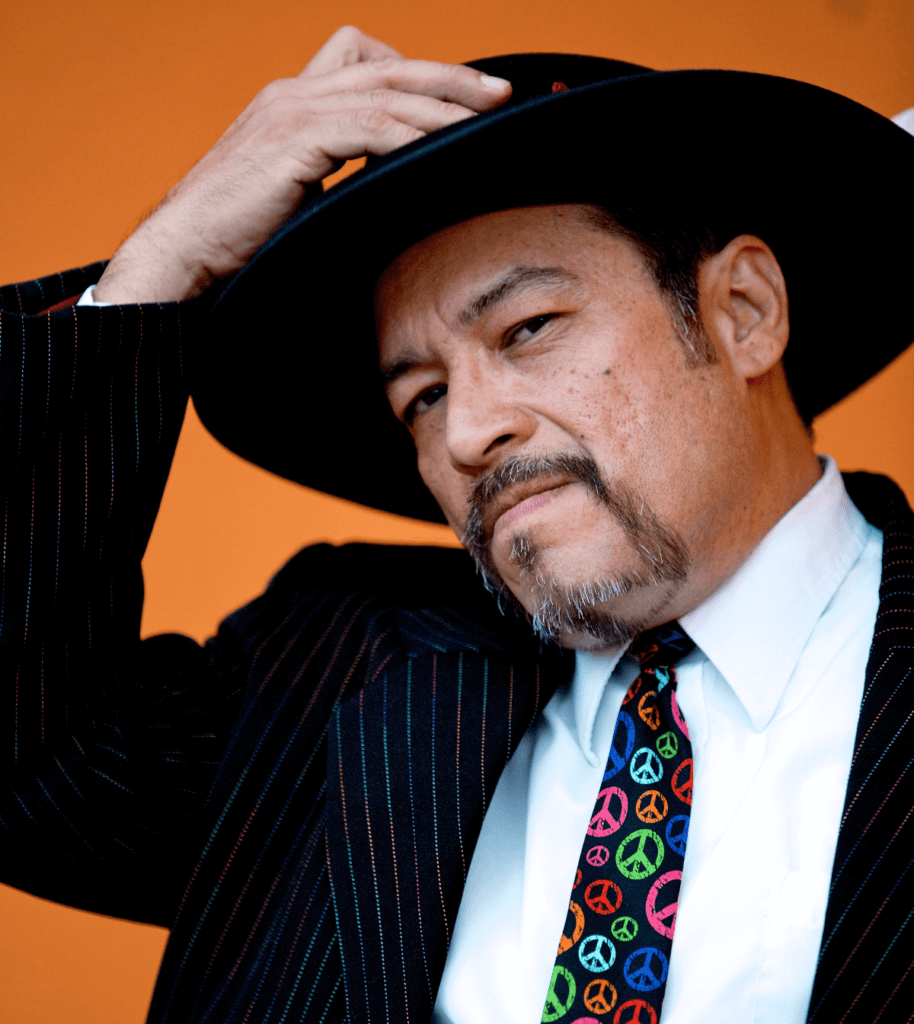
Rosy Simas Danse
Native transdisciplinary and dance artist Rosy Simas’ newest major work, A:gajë:gwah dësa’nigöëwë:nye:’ (i hope it will stir your mind), is a dance and community engagement project of healing, generating, and rest, centering Haudenosaunee contemporary views of what it means to cultivate a mind of peace, set to premiere in spring 2026. The Documentation & Storytelling Fund will be used to document the creation and presentation of this dance, installation, and community engagement project, which shares Onöndowa’ga:’ (Seneca) and Hodinöšyö:nih (Haudenosaunee) views on relationality with the world, and how Indigenous approaches to peacemaking are much-needed models in this time of divisive politics, bigotry, racism, war and genocide.
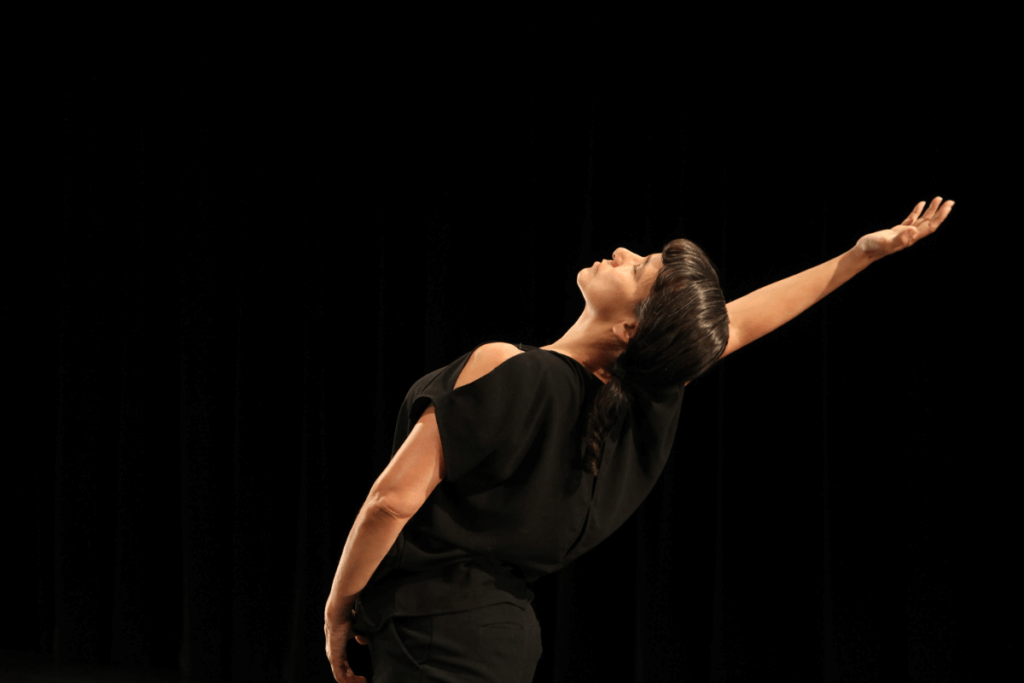
SOLE Defined
ZAZ: The Big Easy is a choreography-led performance combining immersive sound and media technology with percussive dance, honoring Hurricane Katrina survivors from New Orleans East. It features tap dance, body percussion, West African dance, contemporary partnering, and original music inspired by oral and documented histories. This project blends history, personal narratives, and ethnographic research to create an archive of American history. Documentation & Storytelling funds will be used to support the second phase of this four-part project, a documentary highlighting interviews with survivors, collaborators, and historians; the historical context of African Diasporic Percussive Dance; a showcase of the creative process; and audience responses.
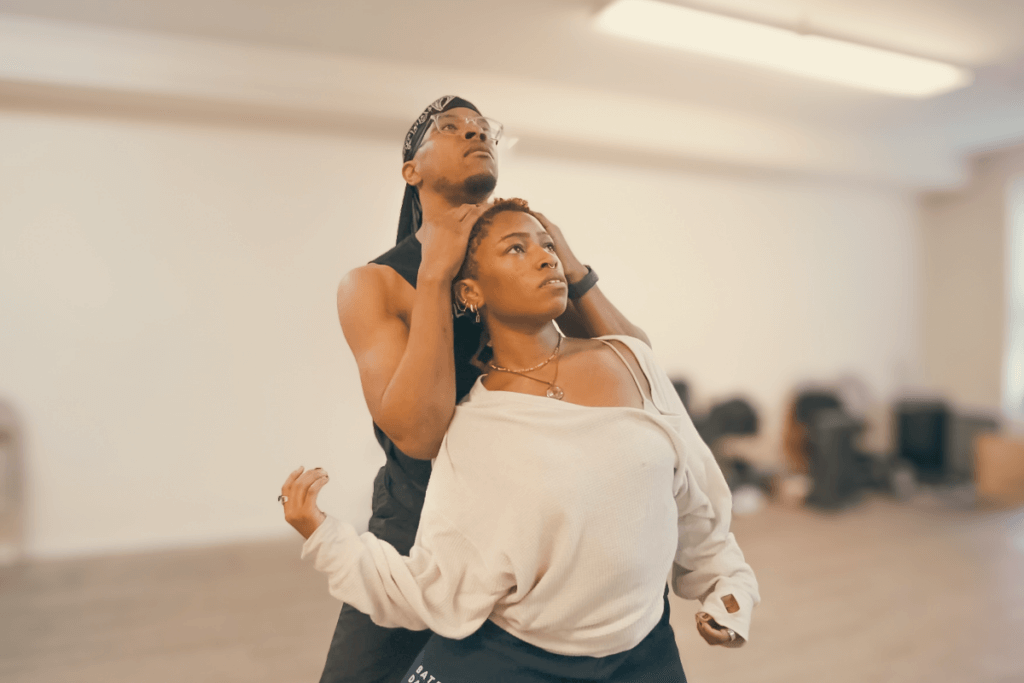
Sydney A. Foster
pray the gay away is an immersive, multi-layer exhibition inspired by accounts from black queer bodies living in the Black American South, Alabama, as they struggle with gender, race, and religious identities. pray the gay away centers Black southern queer voices existing in spaces and systems where their needs aren’t considered, and where they’re simply told not to be themselves due to respectability politics. Documentation & Storytelling funds will be used to curate, digitize, and preserve Sydney A. Foster’s personal archives to produce a living database of queer works by the artist and by others the artist has documented during this process.
Sydney A. Foster is a Southern Artists for Social Change cohort member.
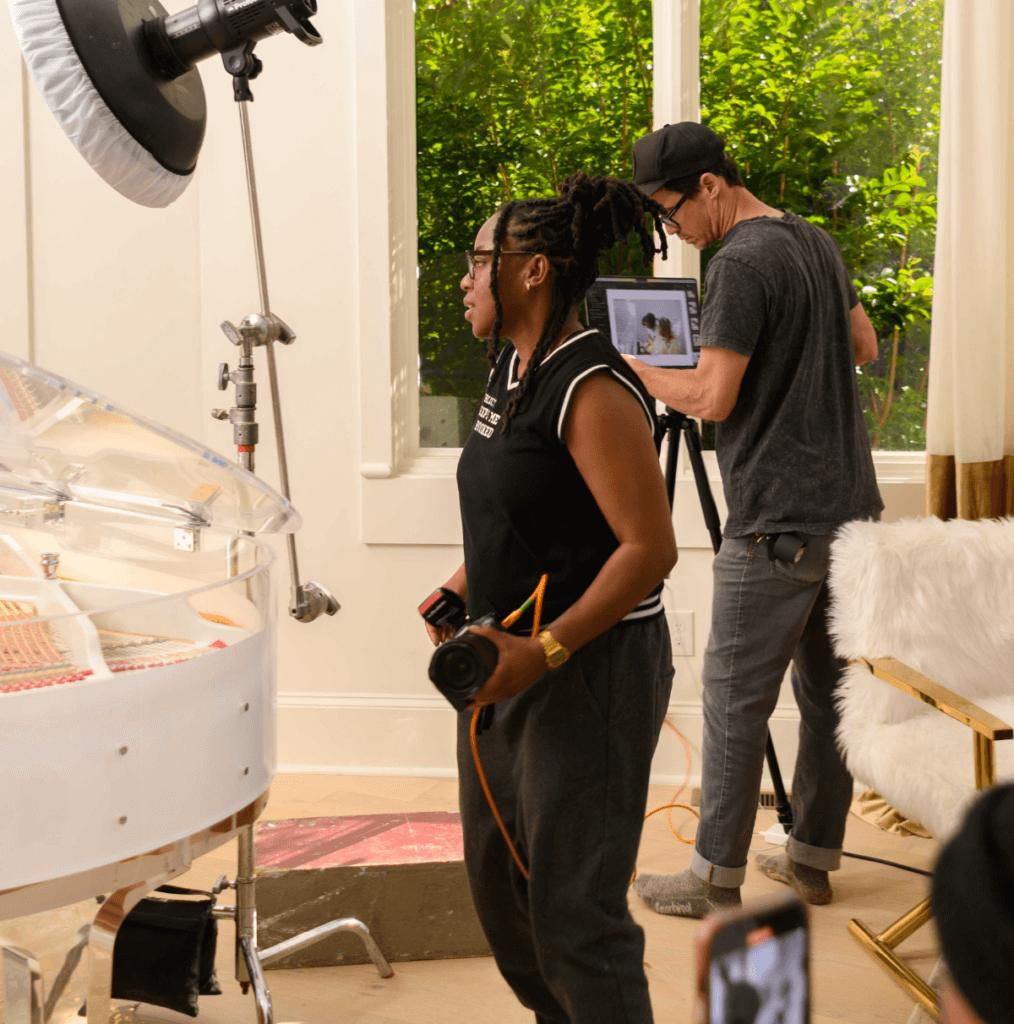
Synamin Vixen
Daughter of a Nymph Divine is a sensory expansion of Synamin Vixens’ book of the same title into a physical world of movement, projection, and sound. This work is a living meditation on grief, pleasure, and inviting silence, where audience members are invited to take their own journey through this space. Documentation & Storytelling funds will be used to develop, host, and maintain a website and digital portals for the work; create an electronic press kit (EPK) for touring; and document rehearsals and creation process for archiving and Patreon purposes.
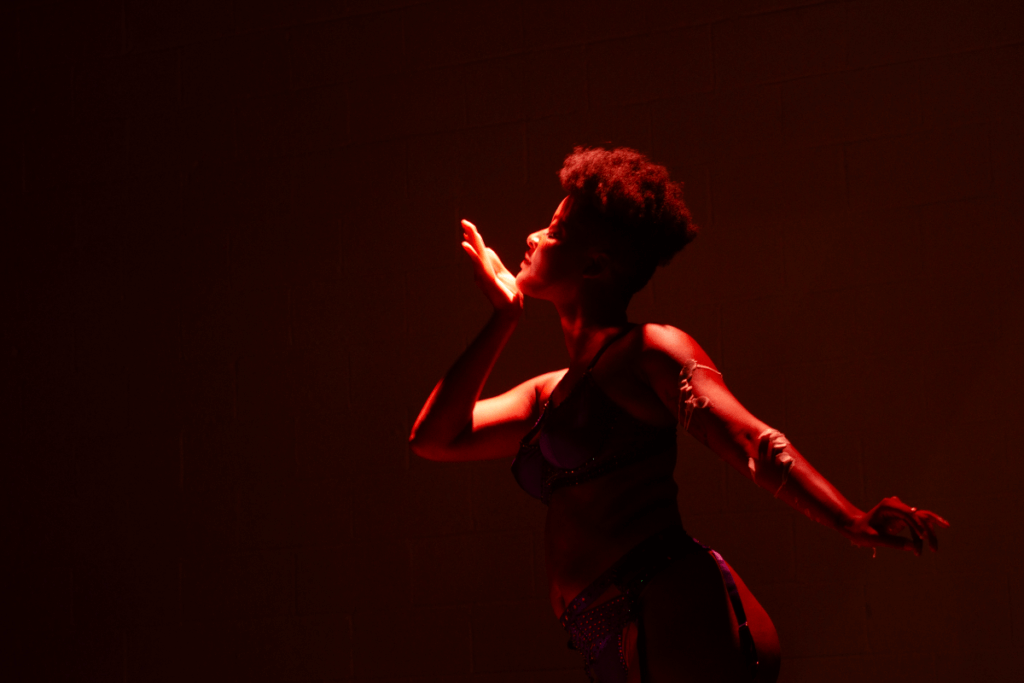
Will Rawls
In the dance performance and installation [siccer], Will Rawls experiments with stop-motion filmmaking techniques in a live setting, wherein still photographs of dancers are strung together to create a moving image that is projected into the performance space, to explore how Black gestures are relentlessly documented, distorted, and circulated in lens-based media. The project’s title is driven by the Latin adverb “[sic],” which indicates incorrect spelling within a quotation and which is often employed to contrast Black vernacular speech with standard English. Rawls turns this conflict on its head in order to illuminate the verbal and physical play of Black performance as something that eludes capture on screen and in language. Documentation & Storytelling funds will be used to curate the storytelling/archival ephemera that document [siccer]’s development and presentation from 2017 to the present, with the goal of producing a book and an album whose music reflects the almost decade-long process of making both the live performance and installation.
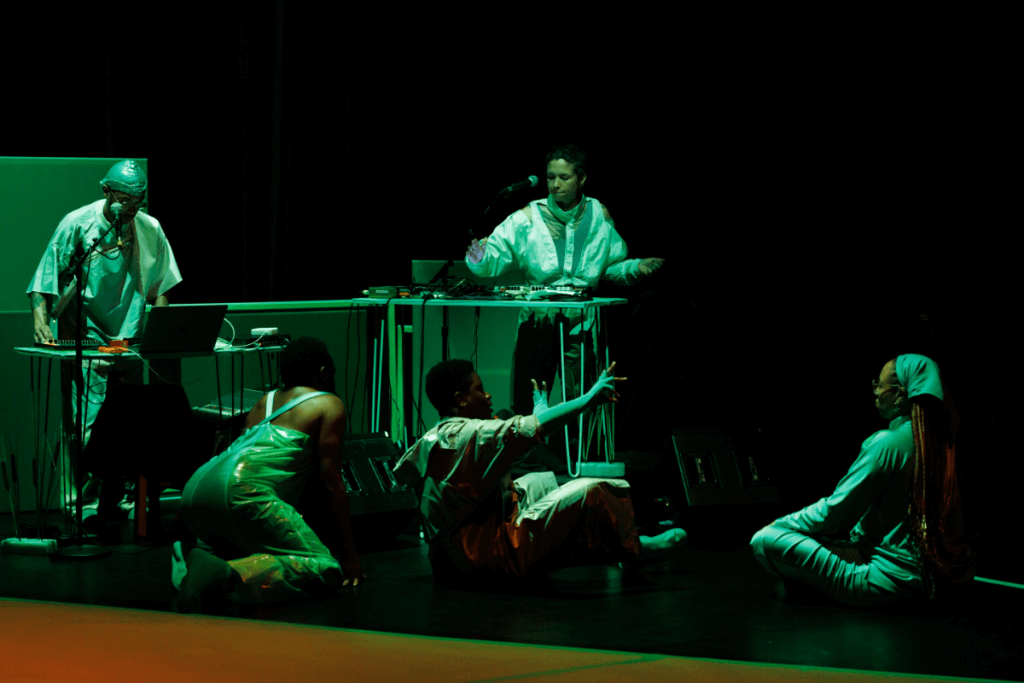
Zain Alam
Meter & Light: Night is a 3-channel audiovisual installation which enacts in miniature and in music the interlocking rhythms of time in Muslim life, specifically after sunset: prayers marking the last light, sleepless recitations marking the Night of Power, retreat to sacred shrines, the forgiveness of debts and donations of food for all to share at dawn. The Documentation & Storytelling Fund will be used to help document each step of the process as the creative, ritual, and public dimensions of the project move from development to the final stages of production and exhibition.
